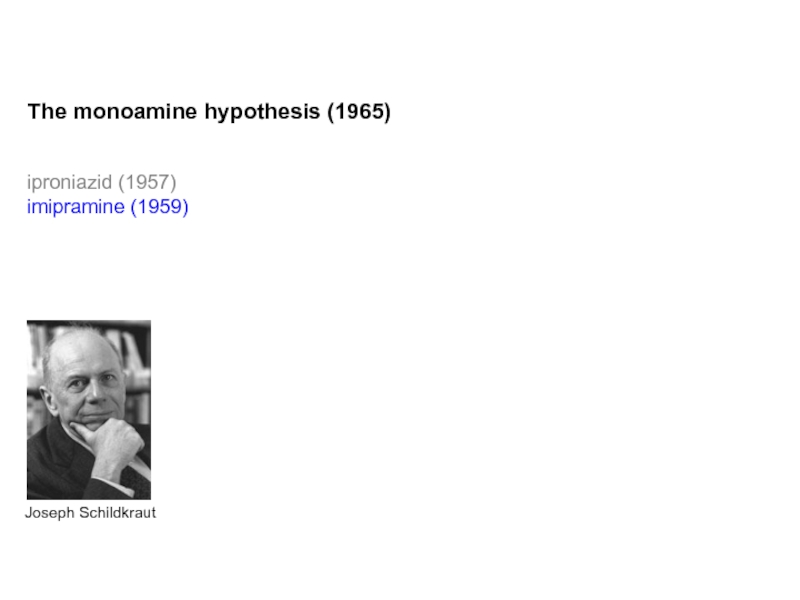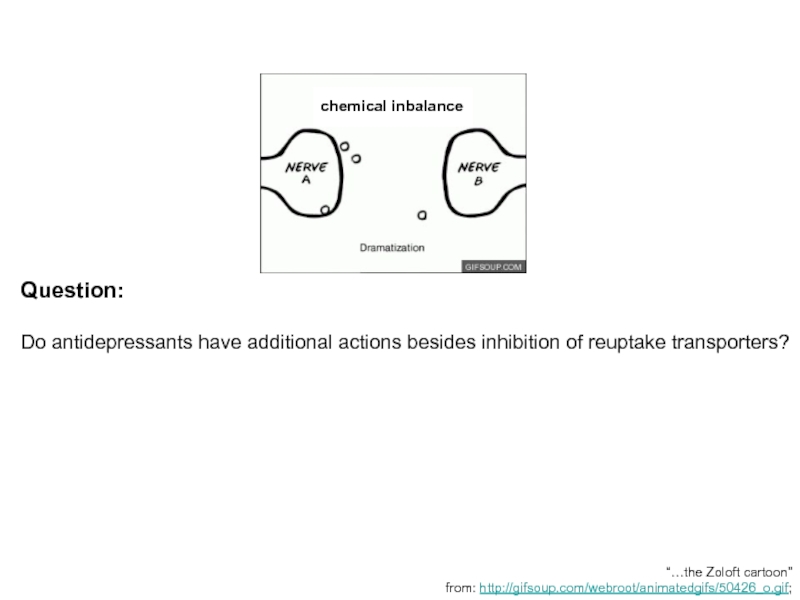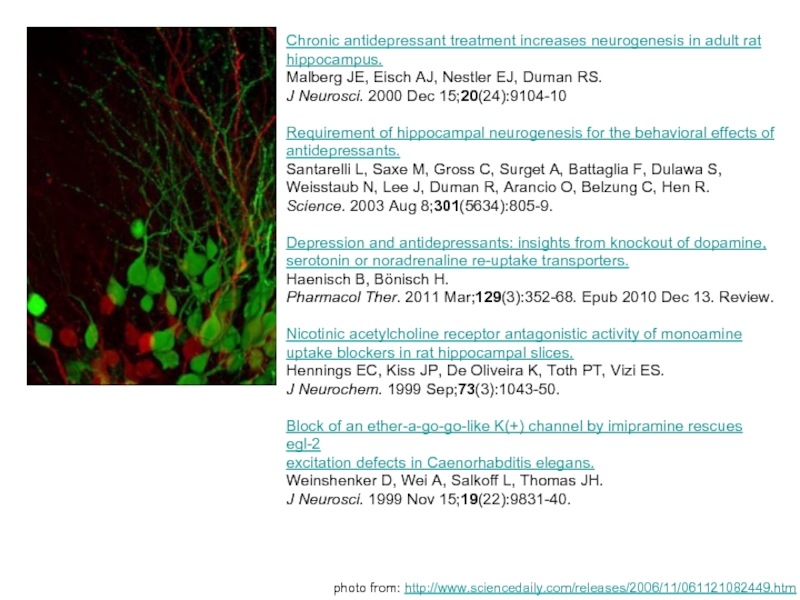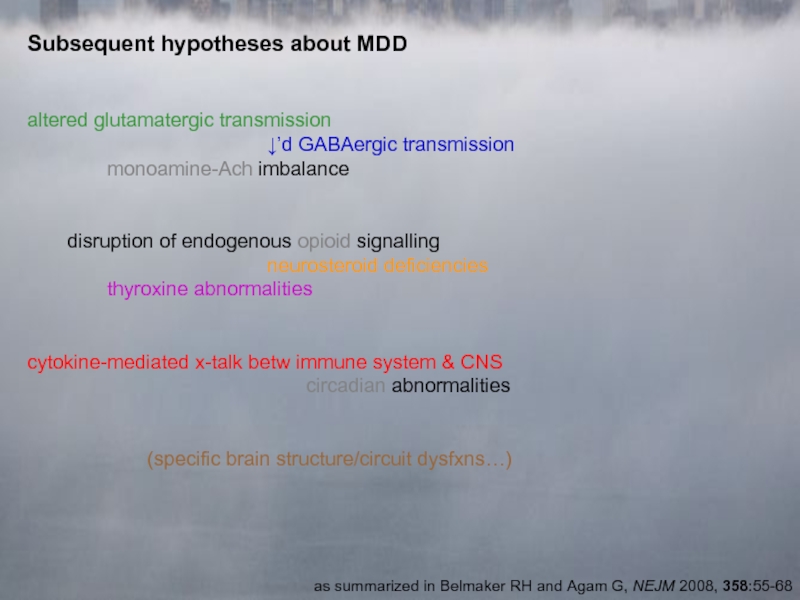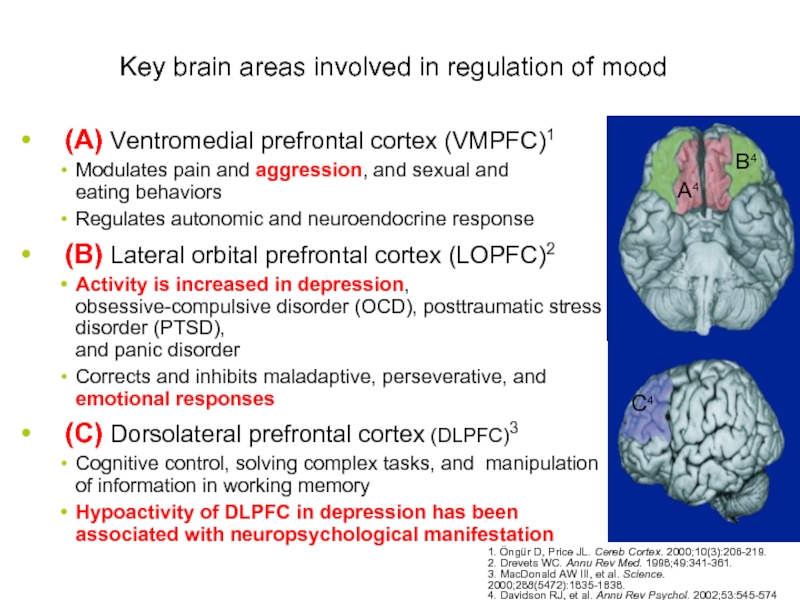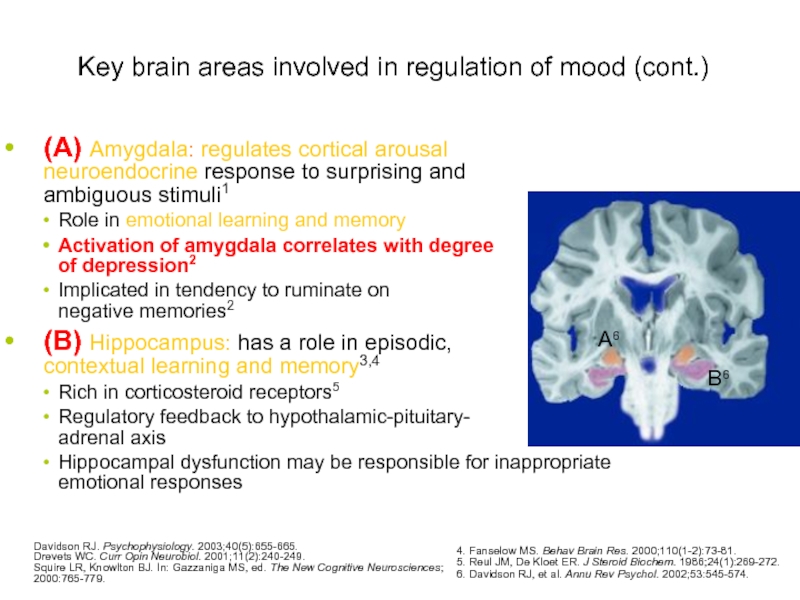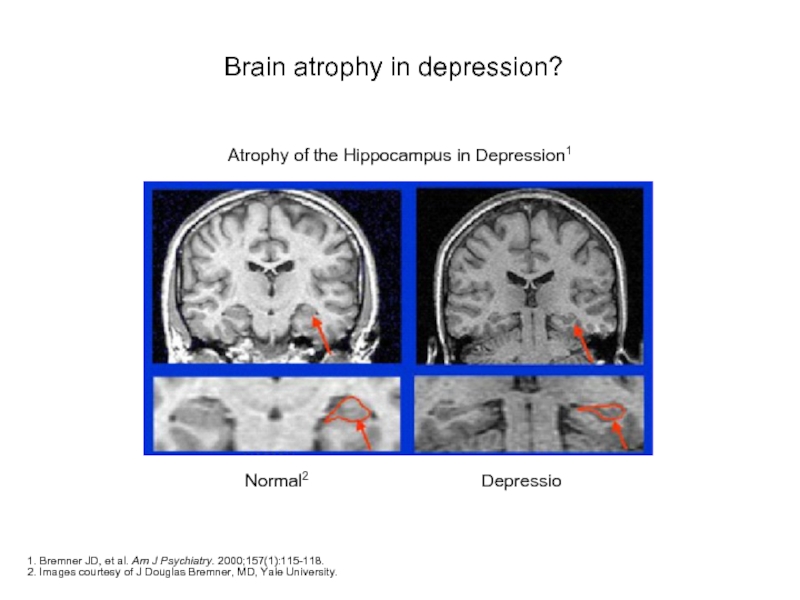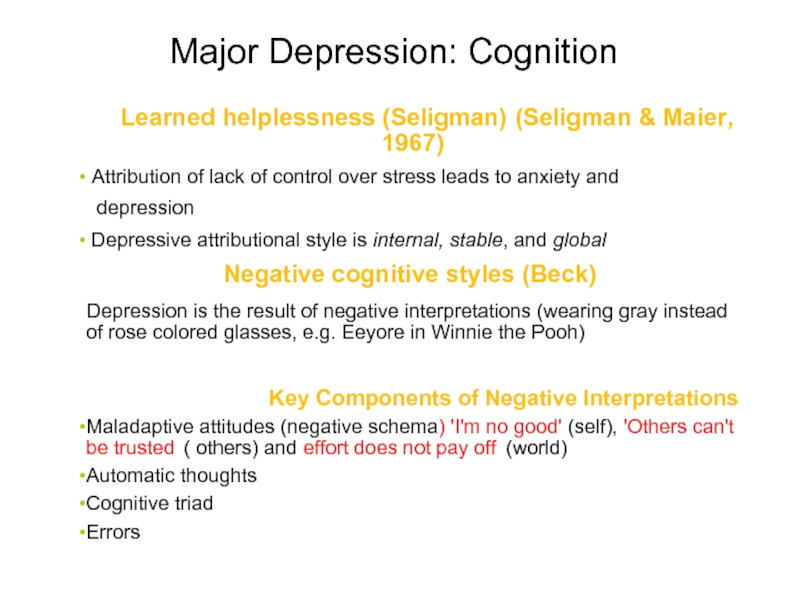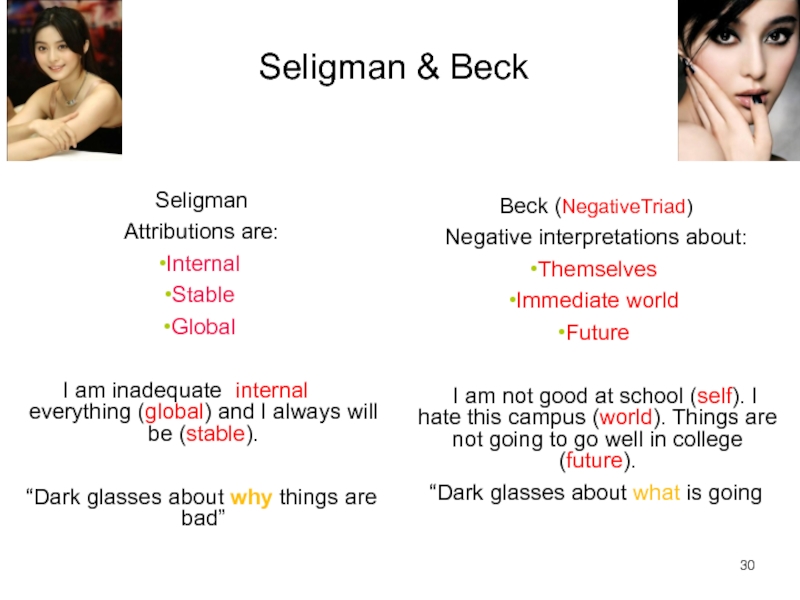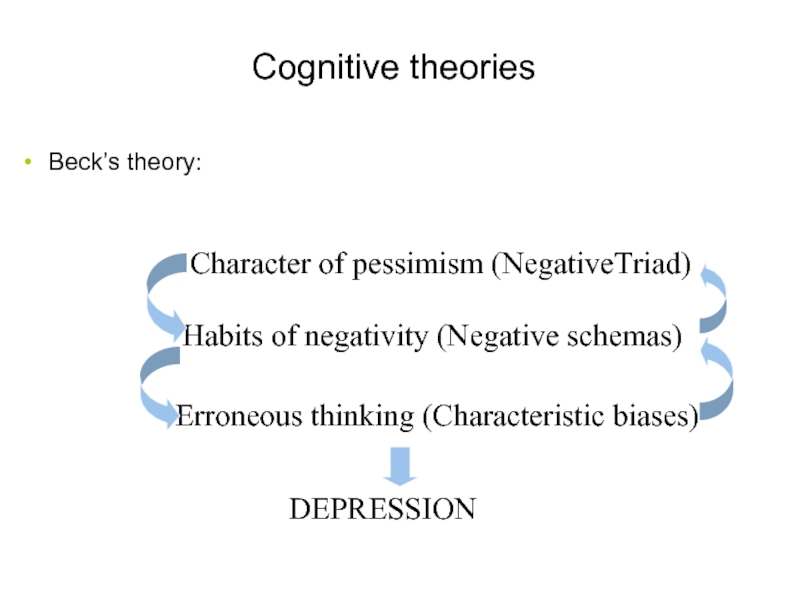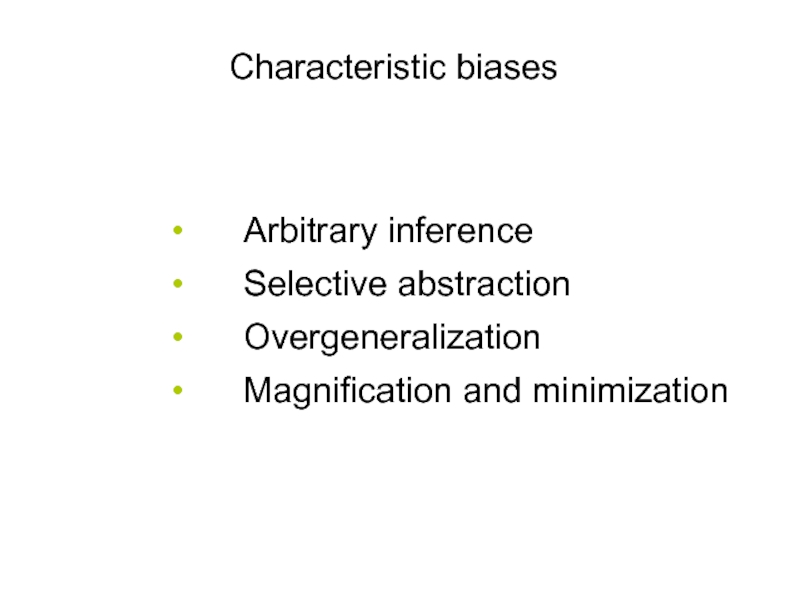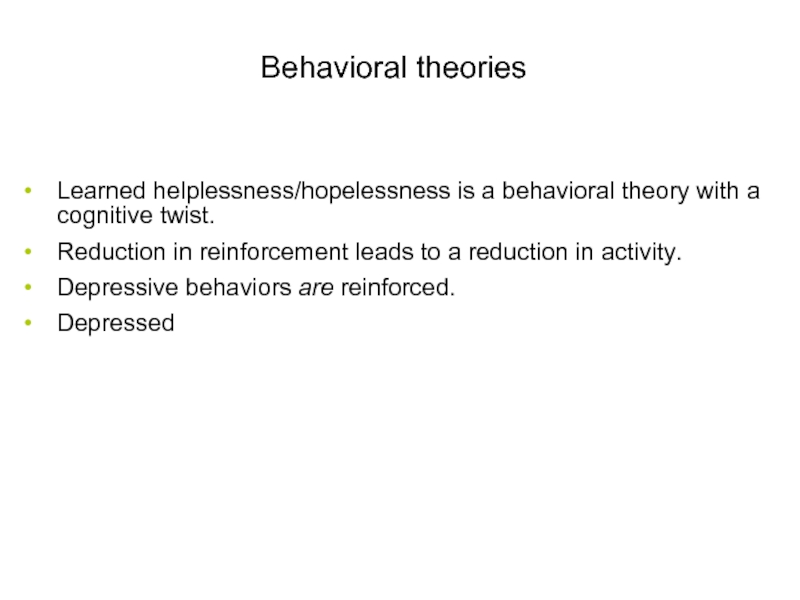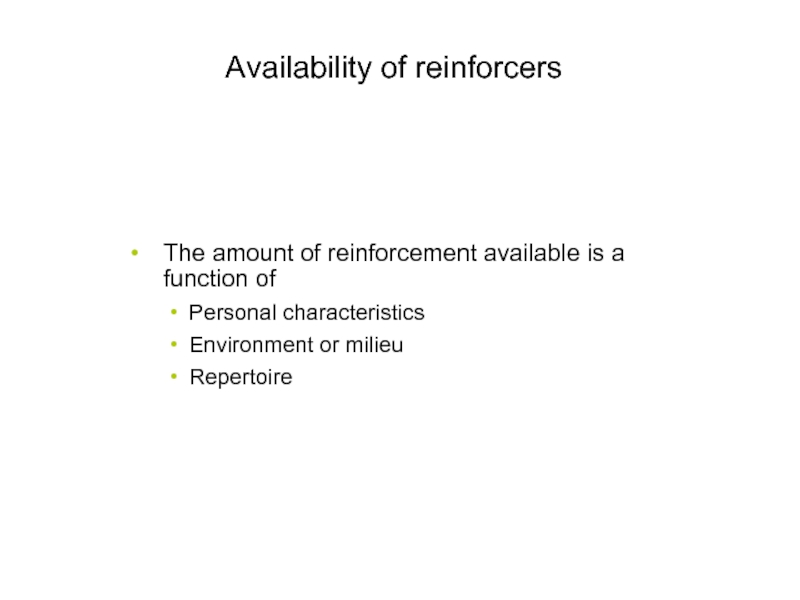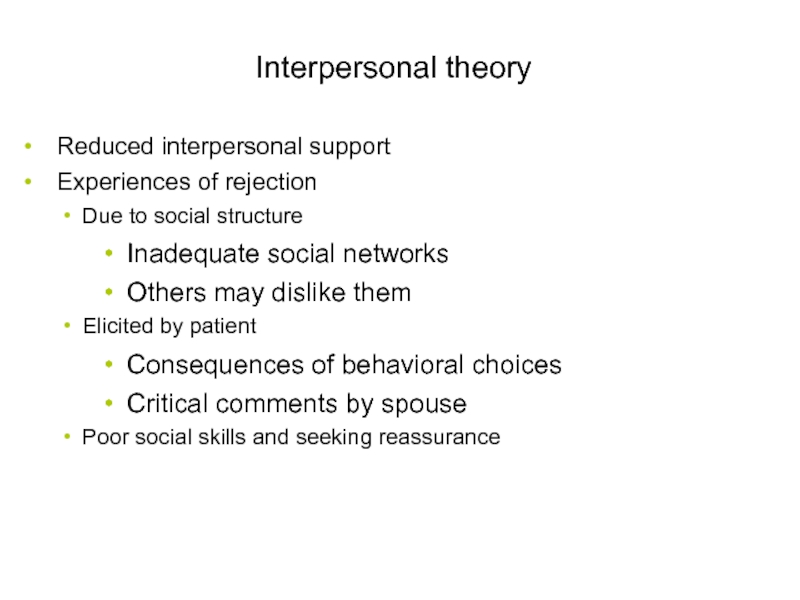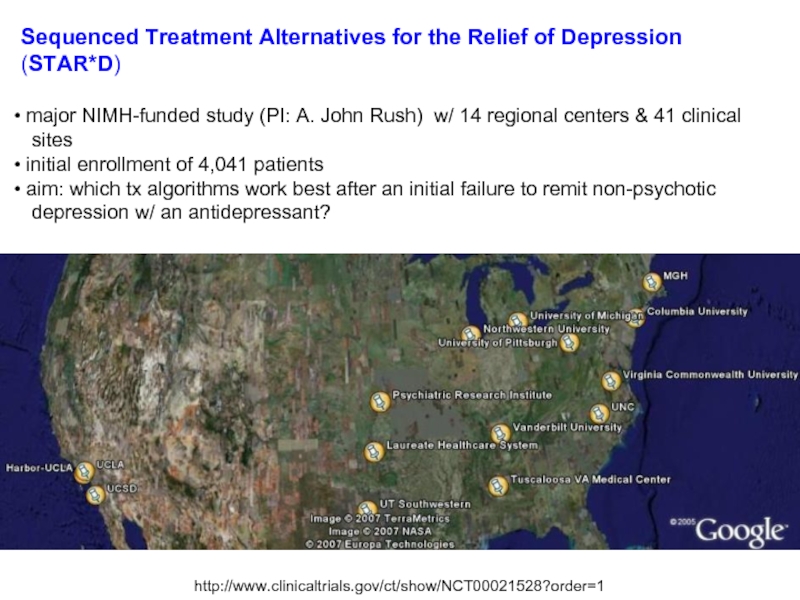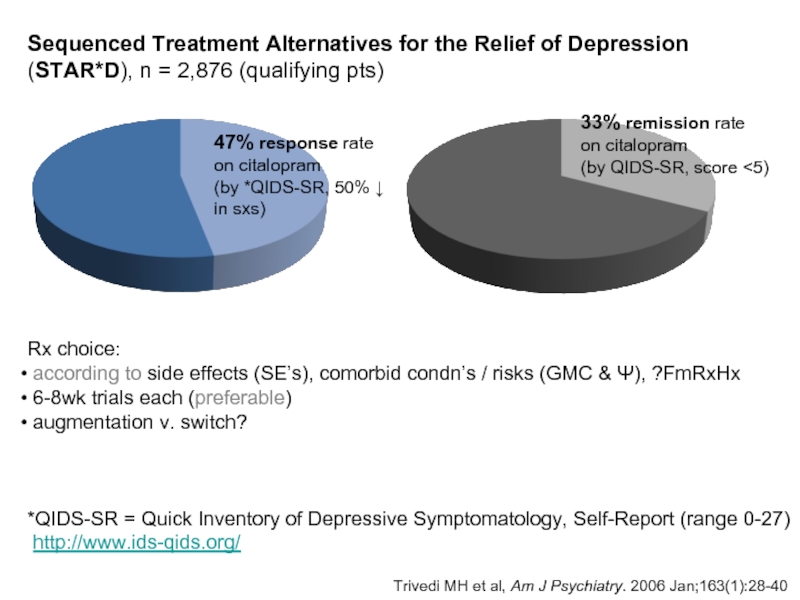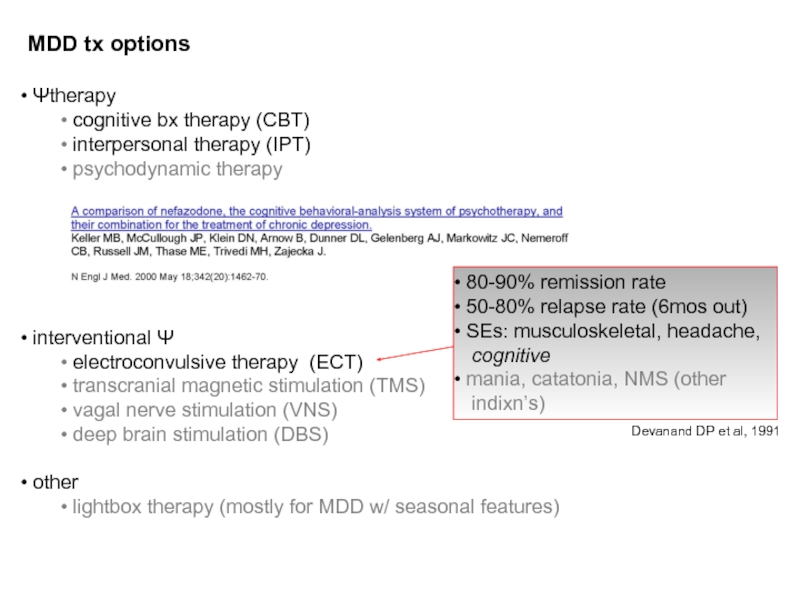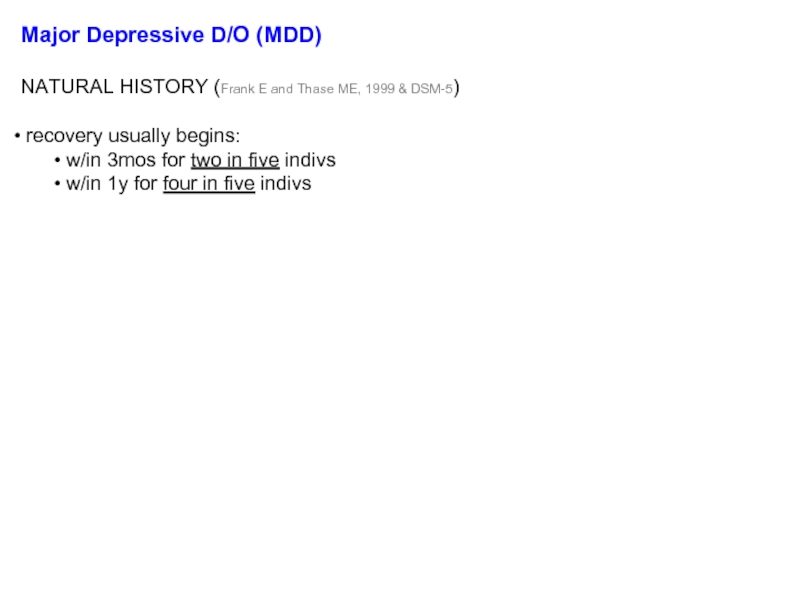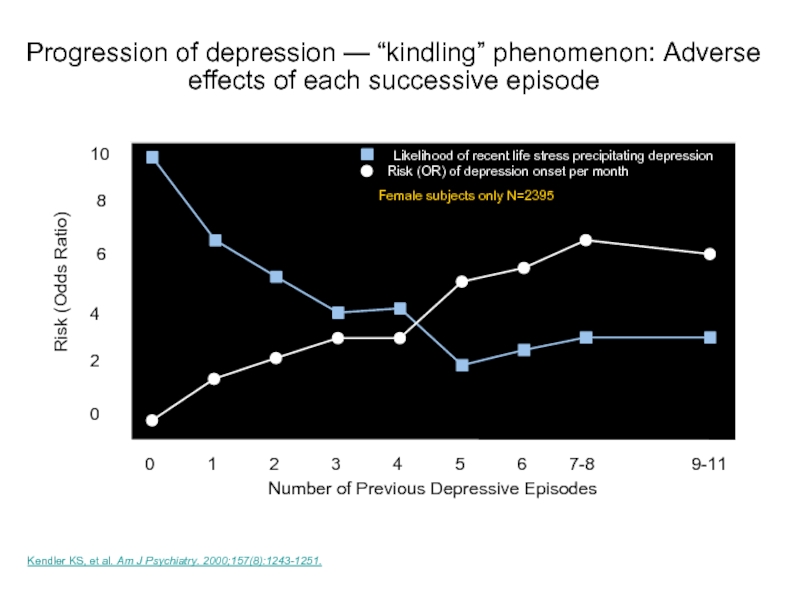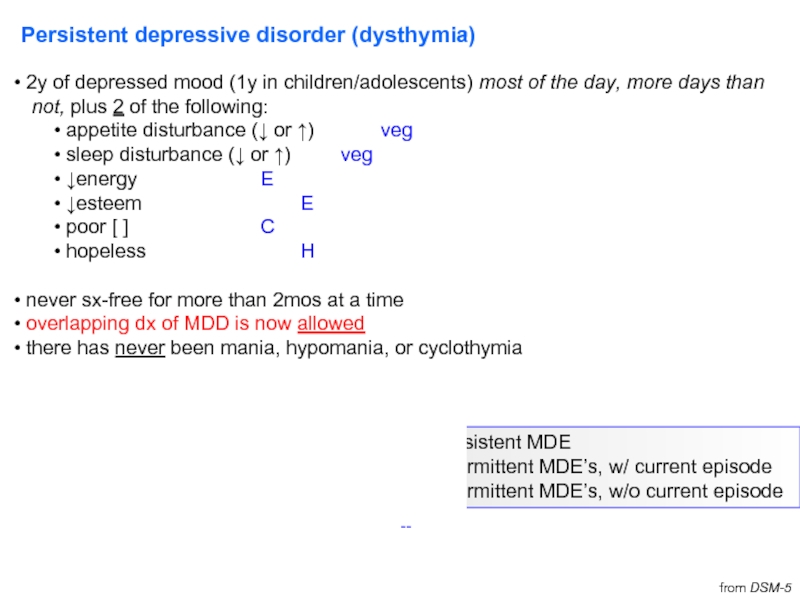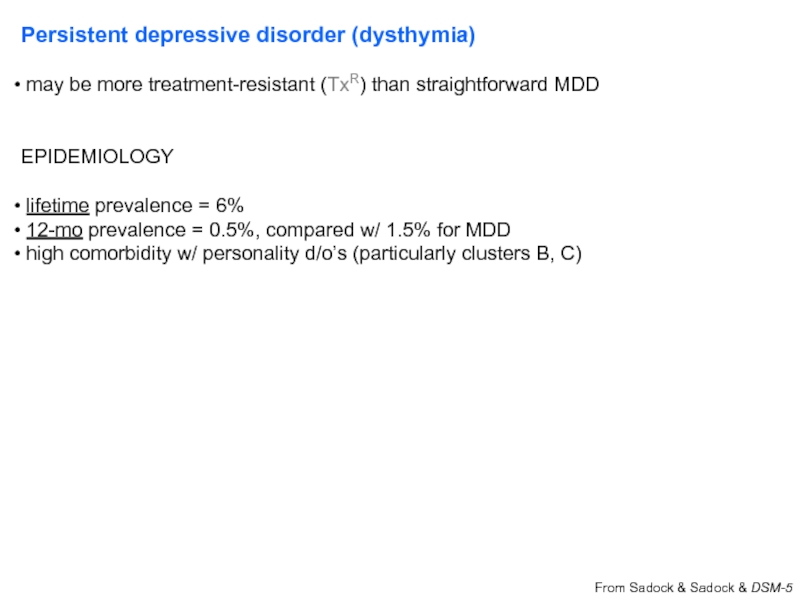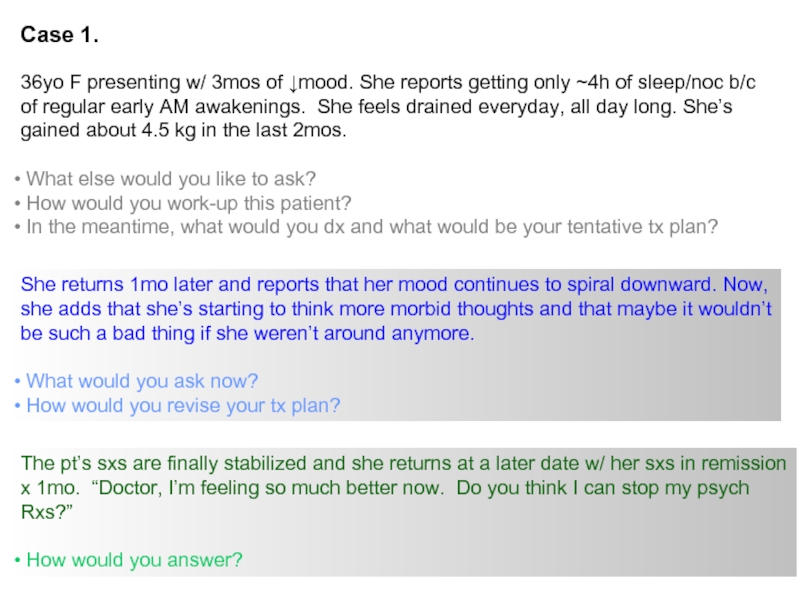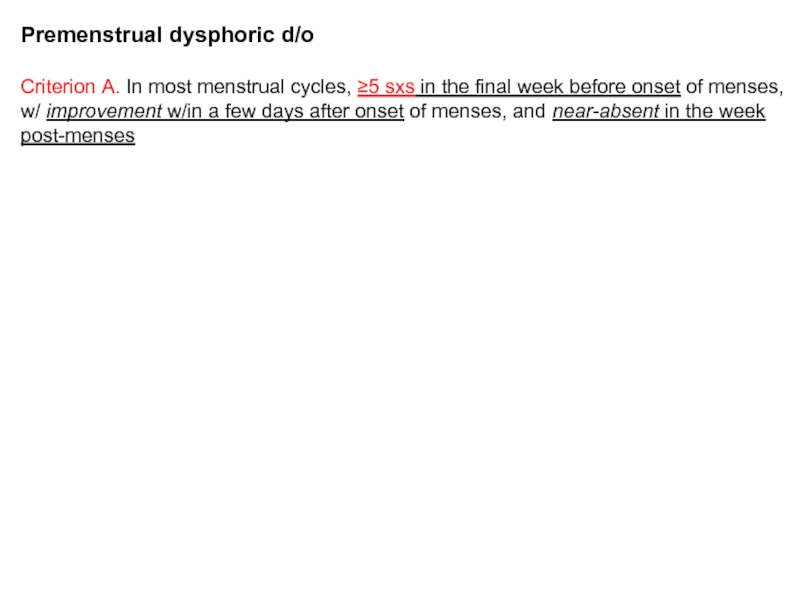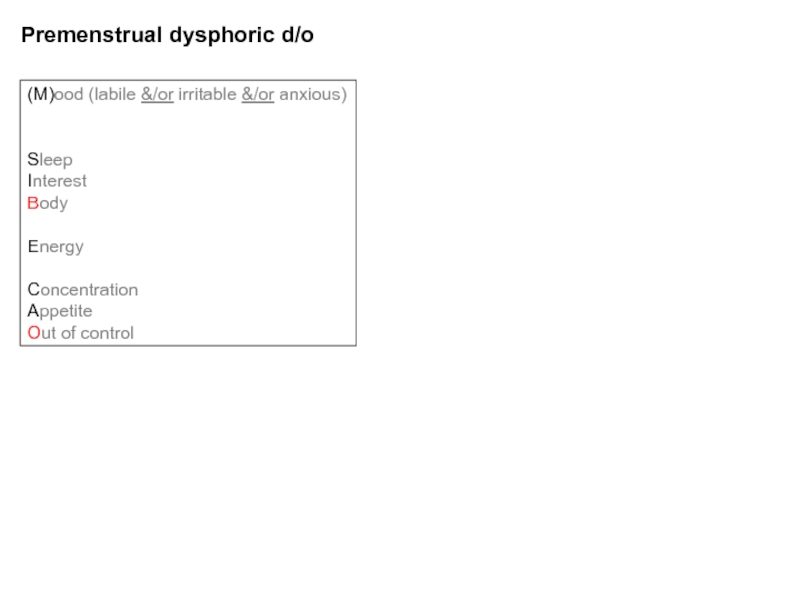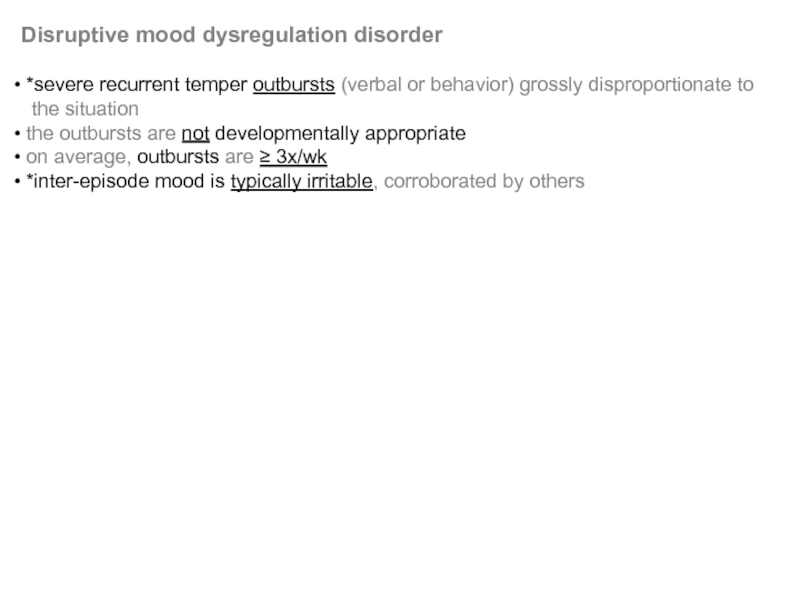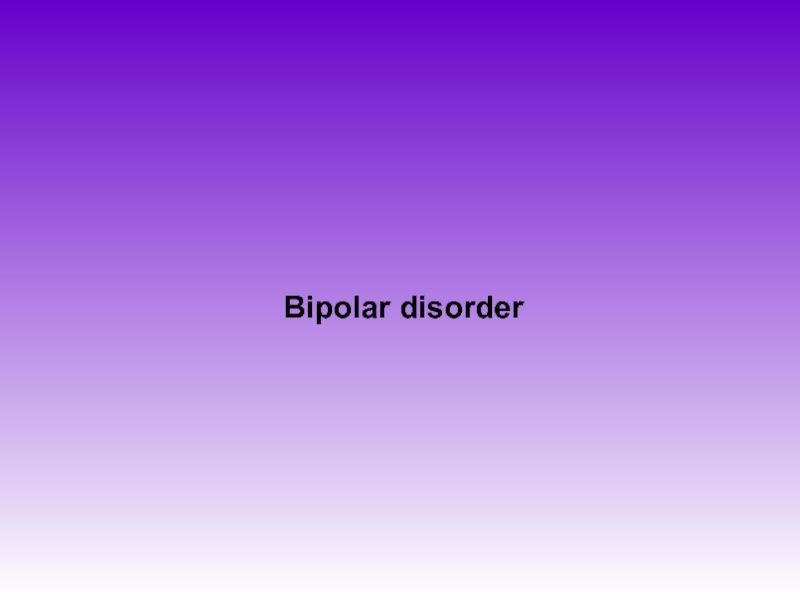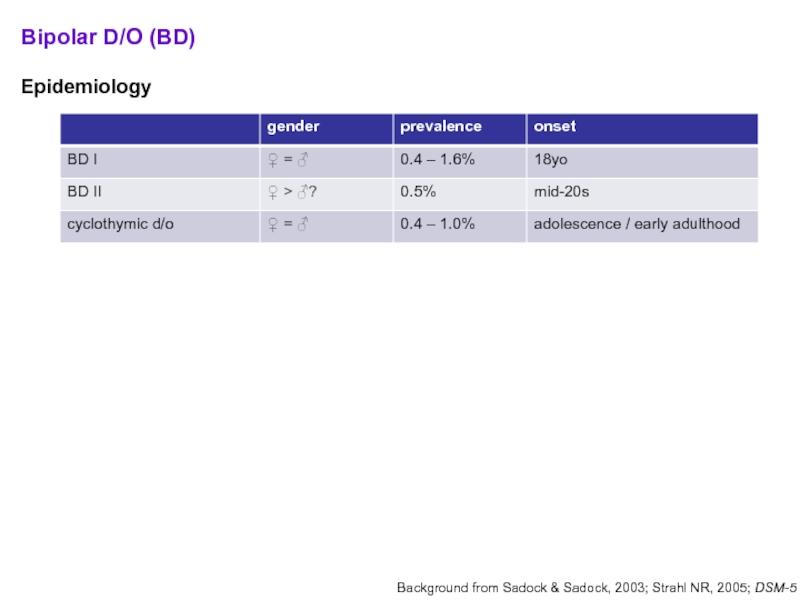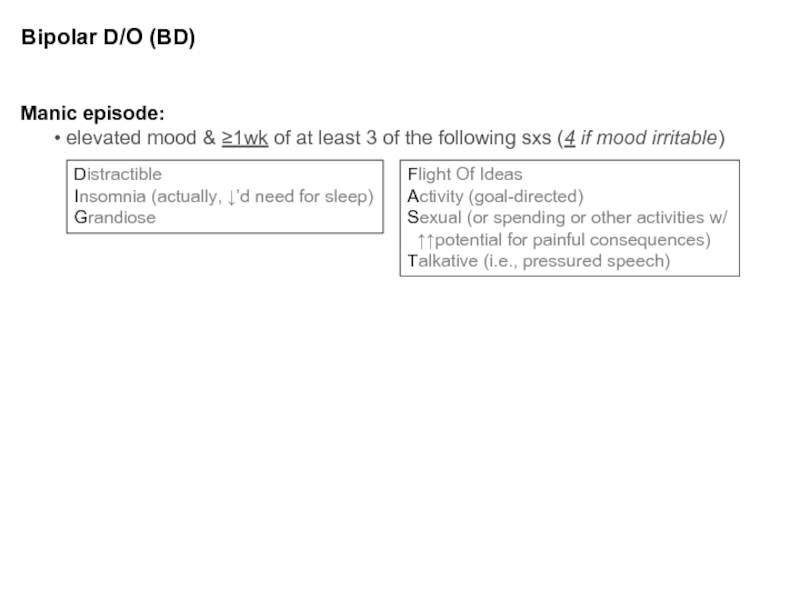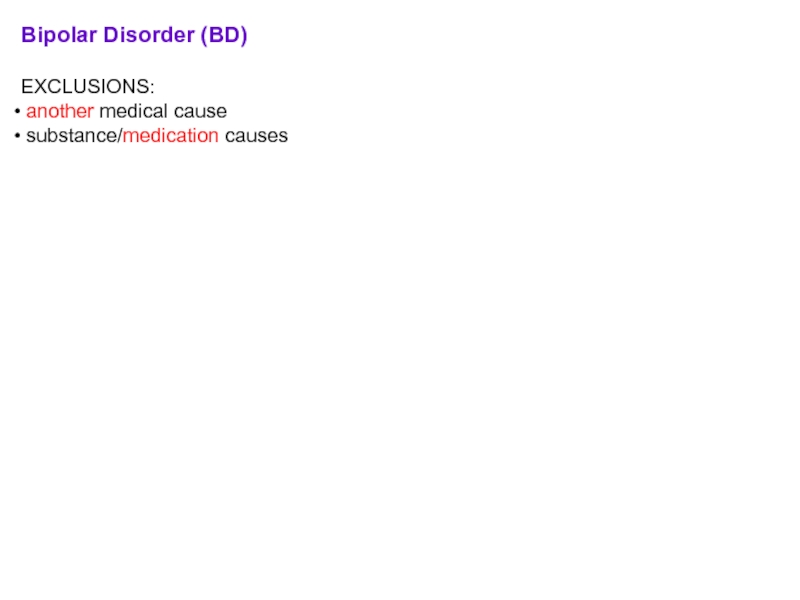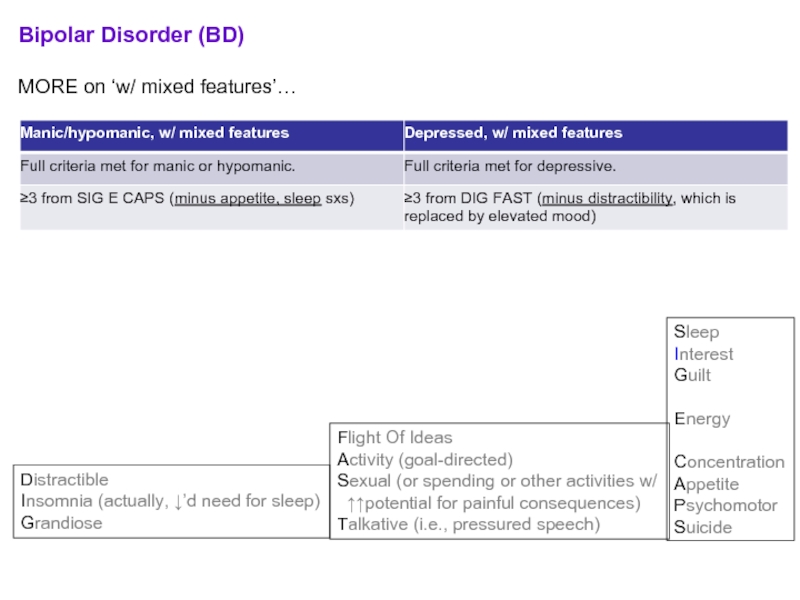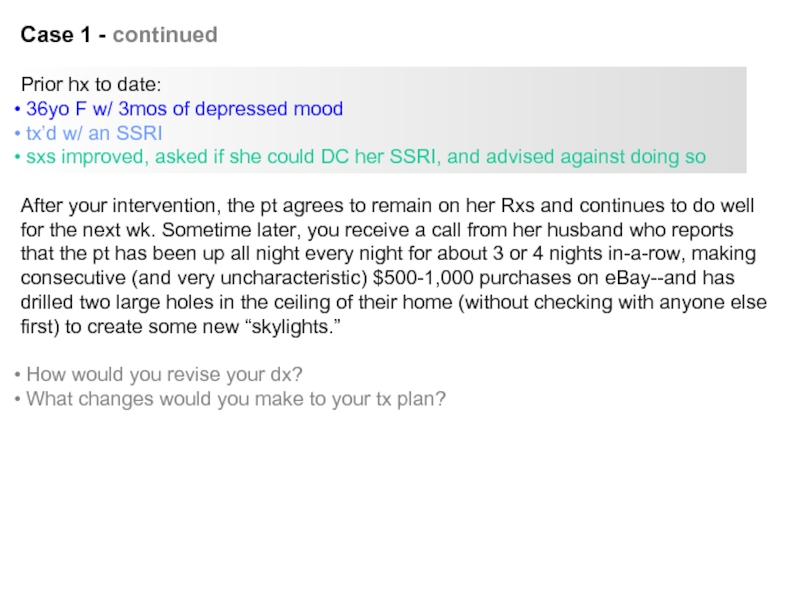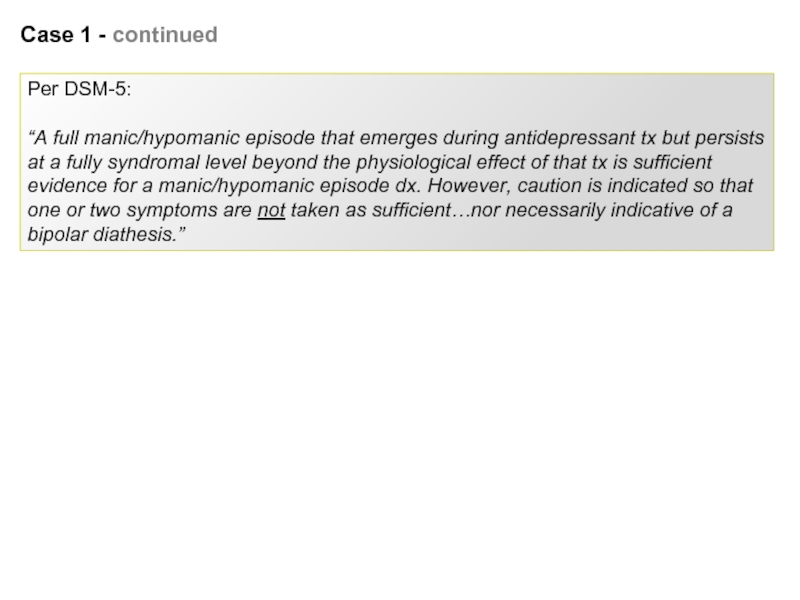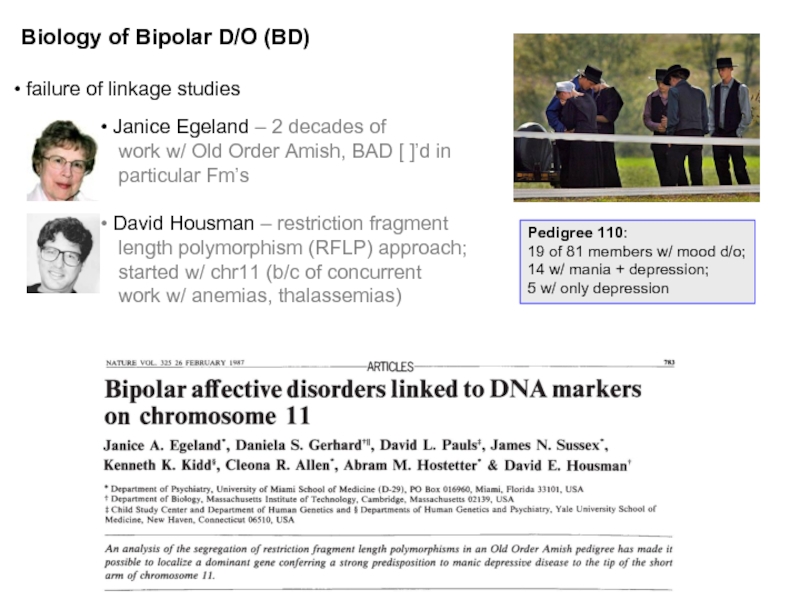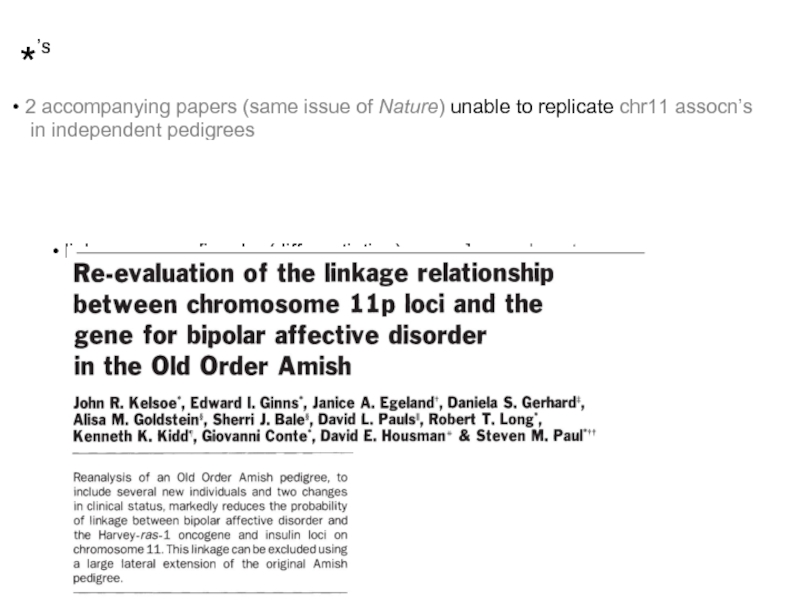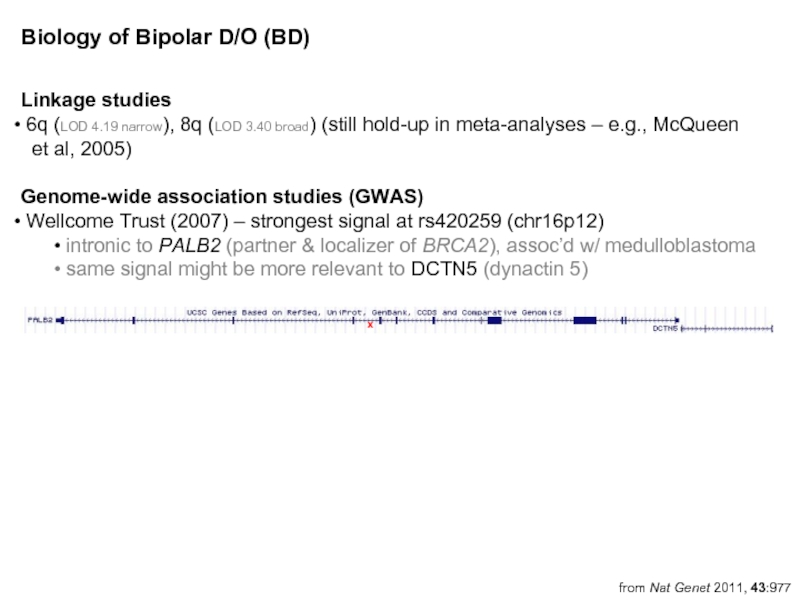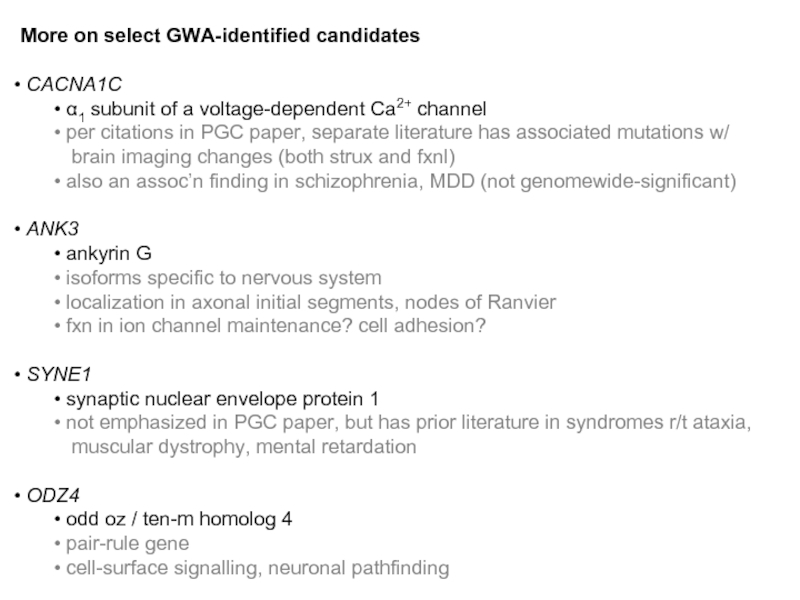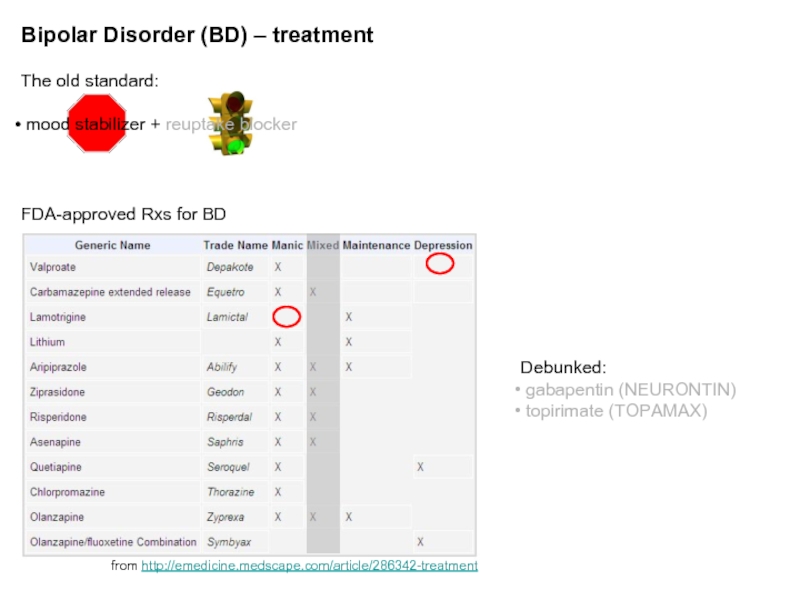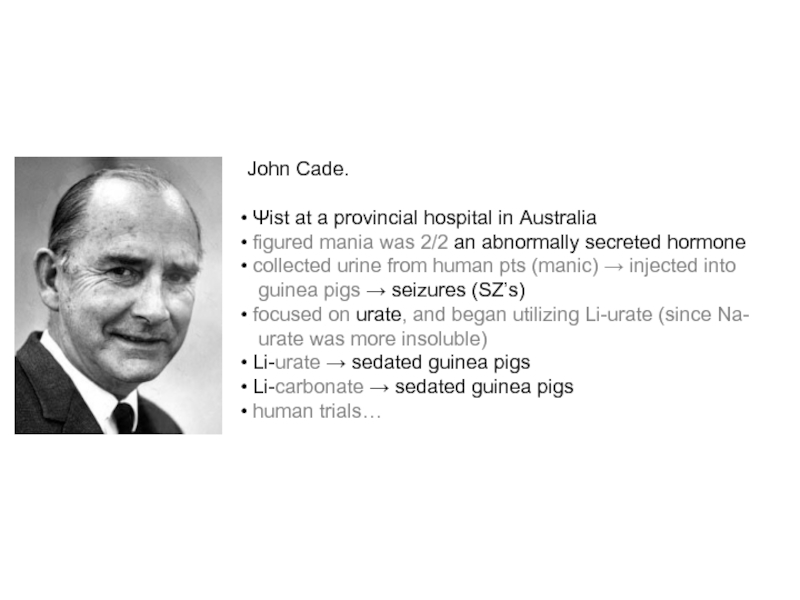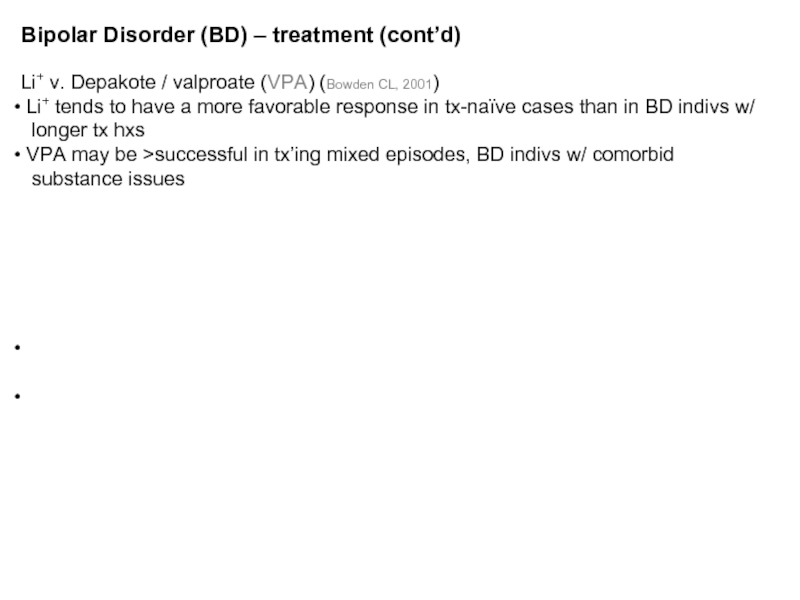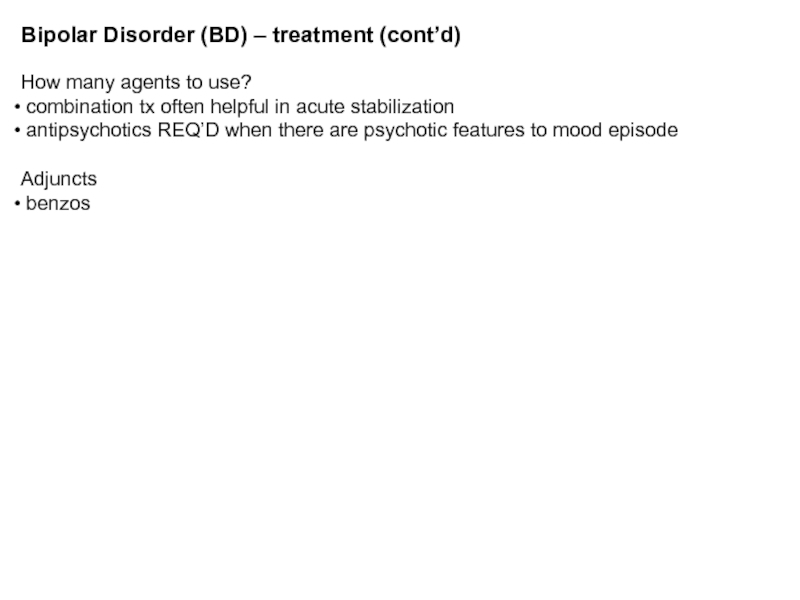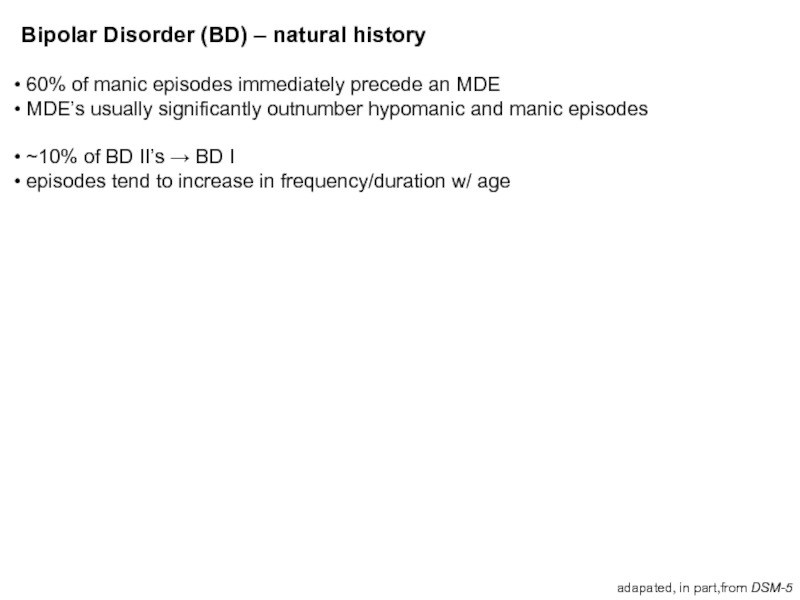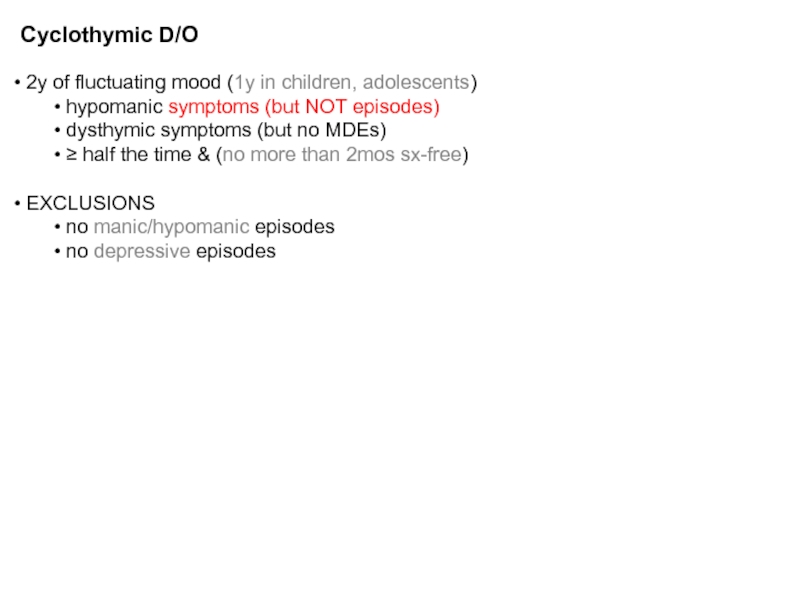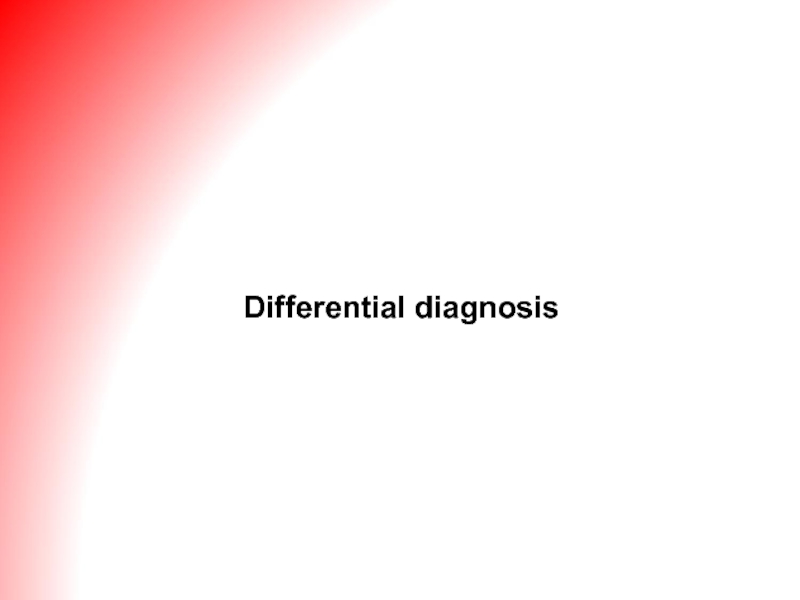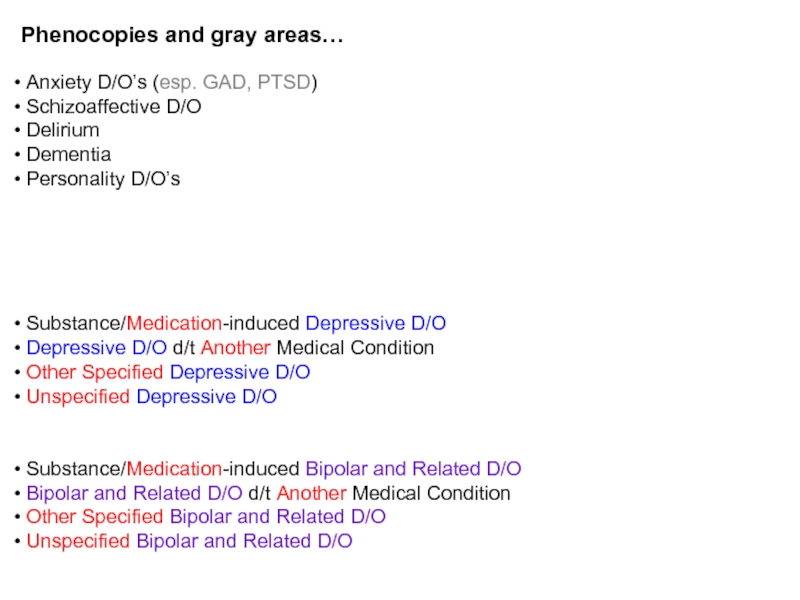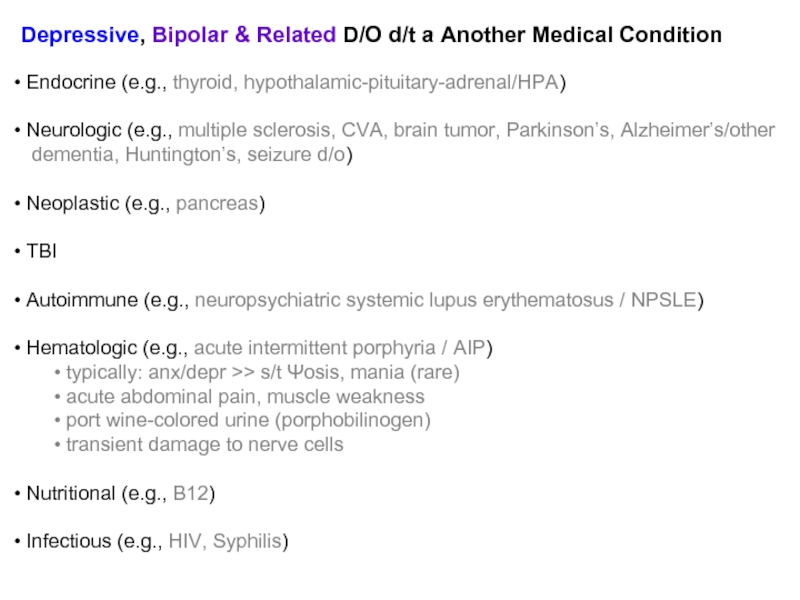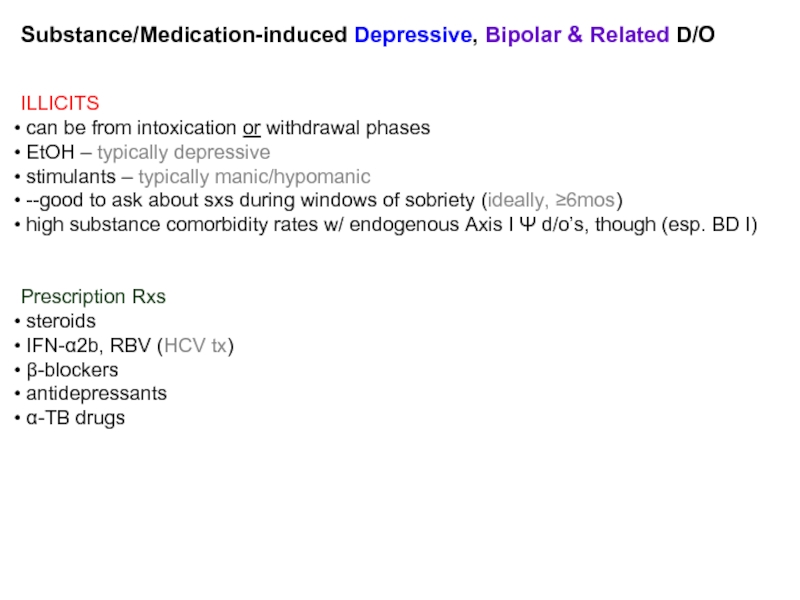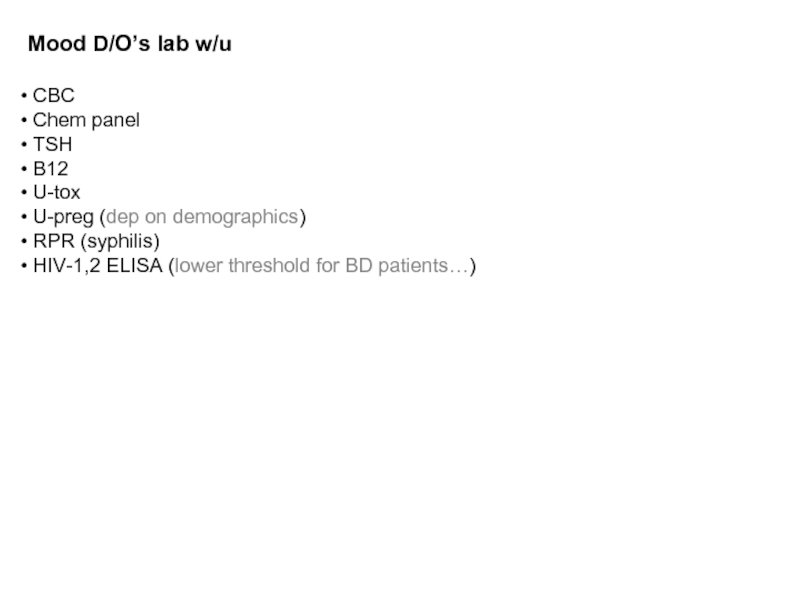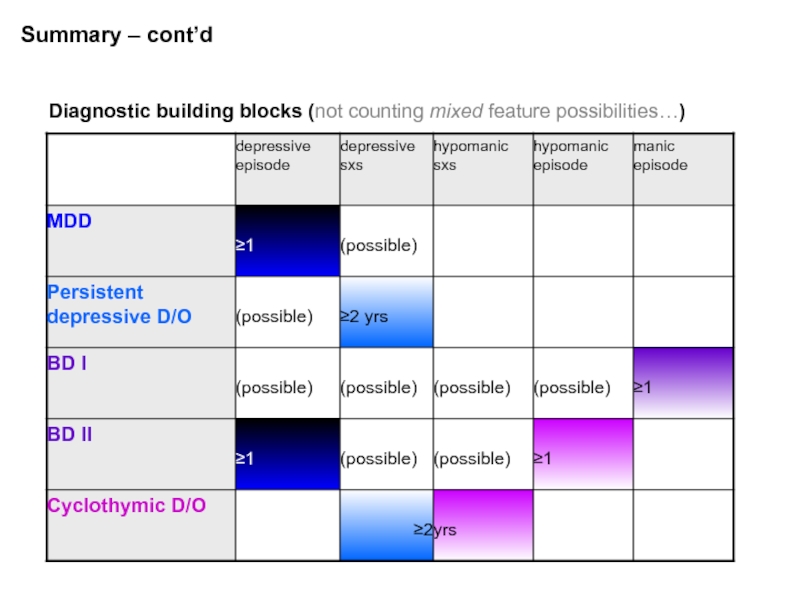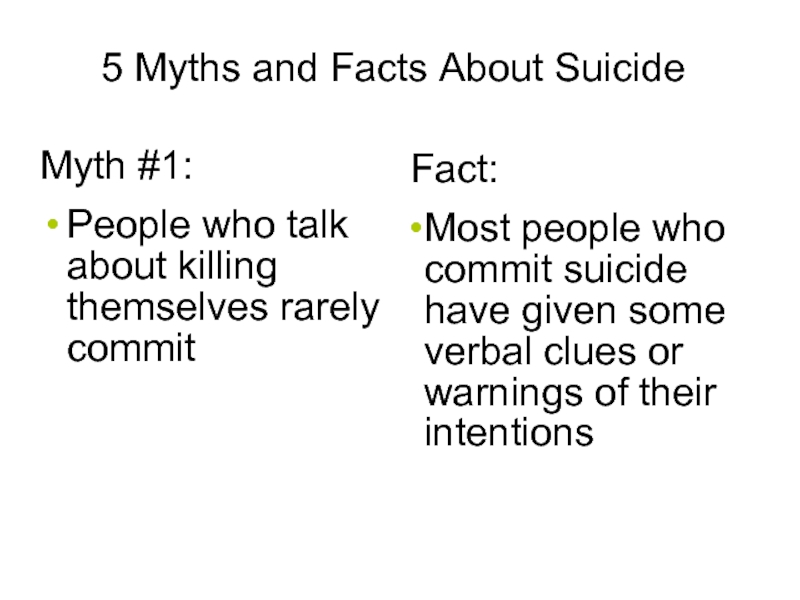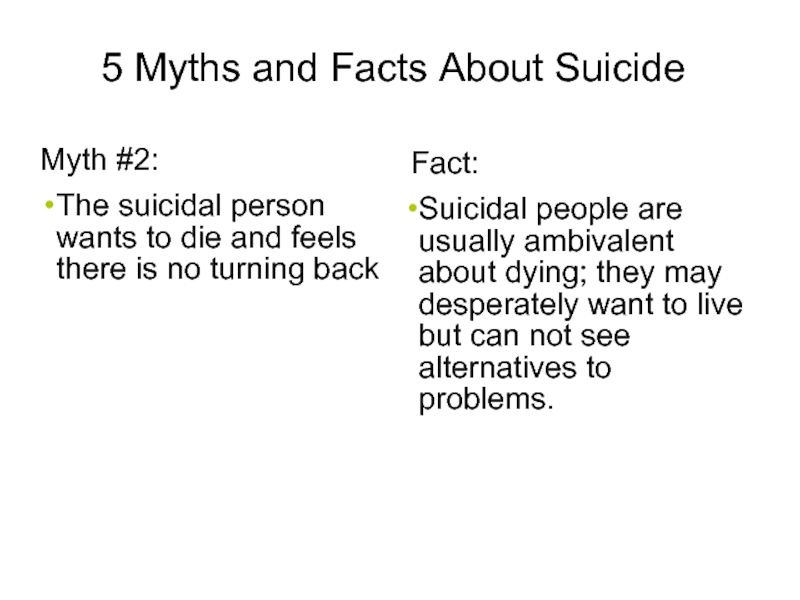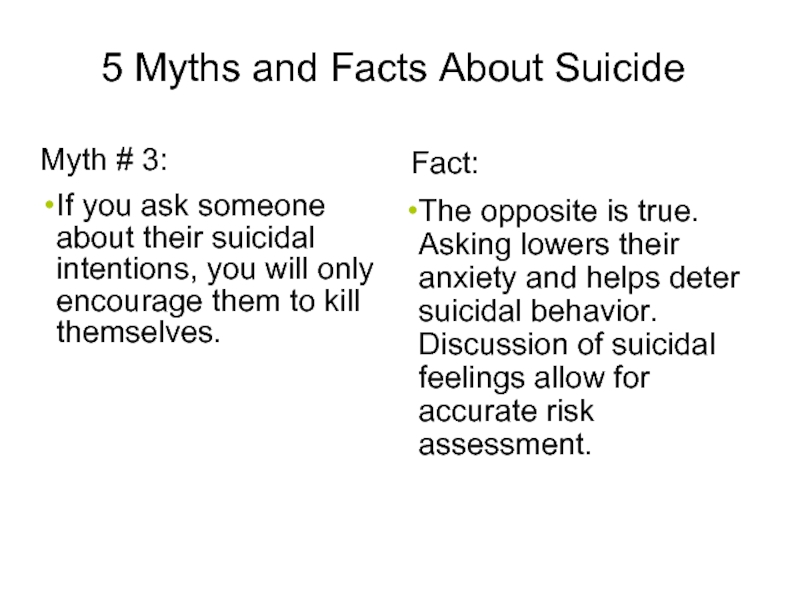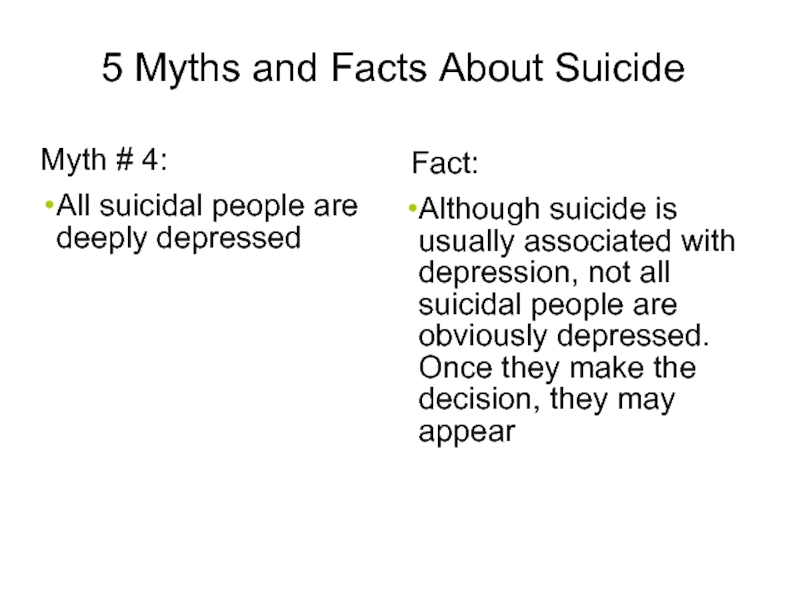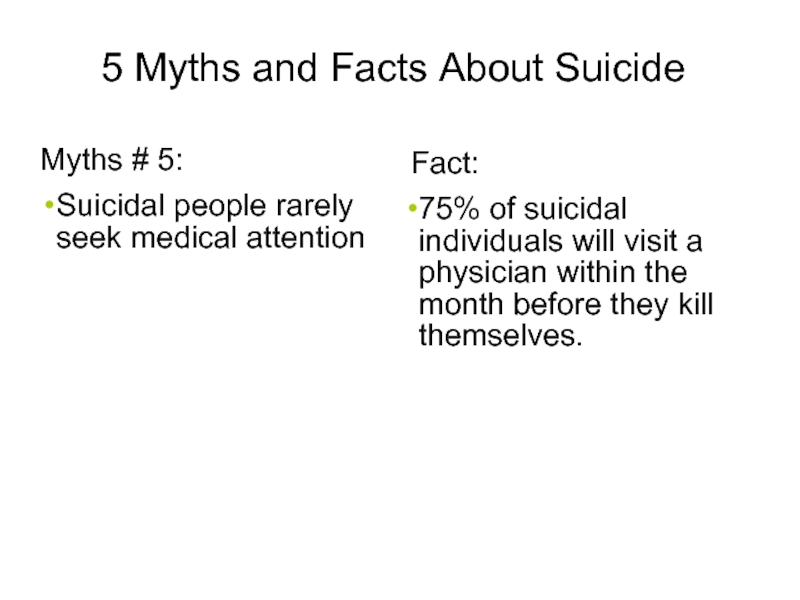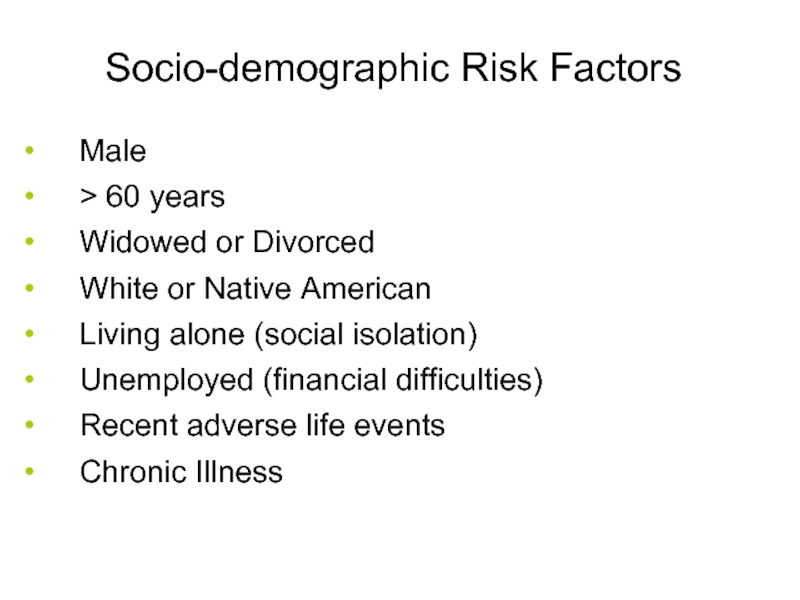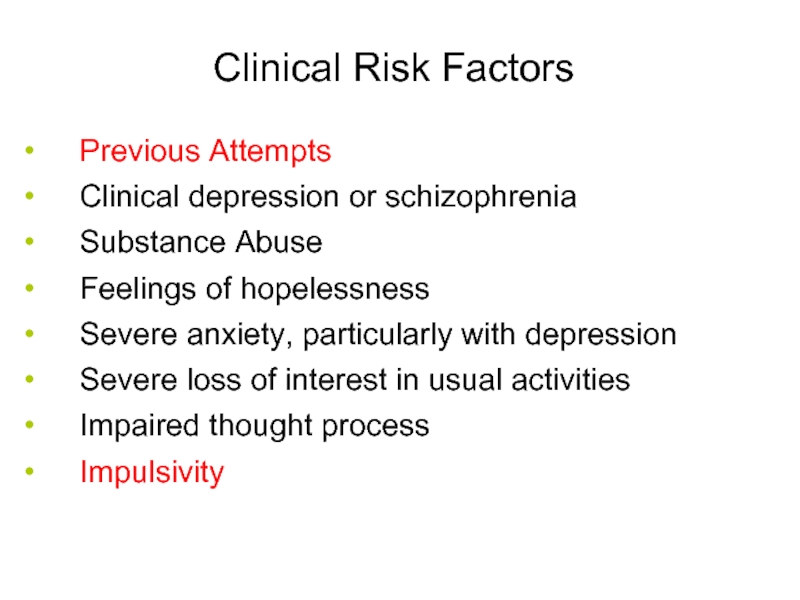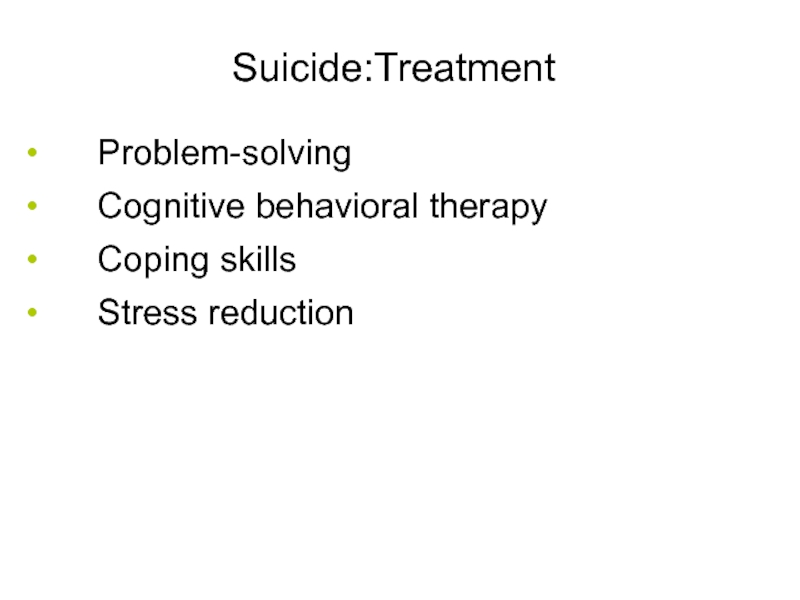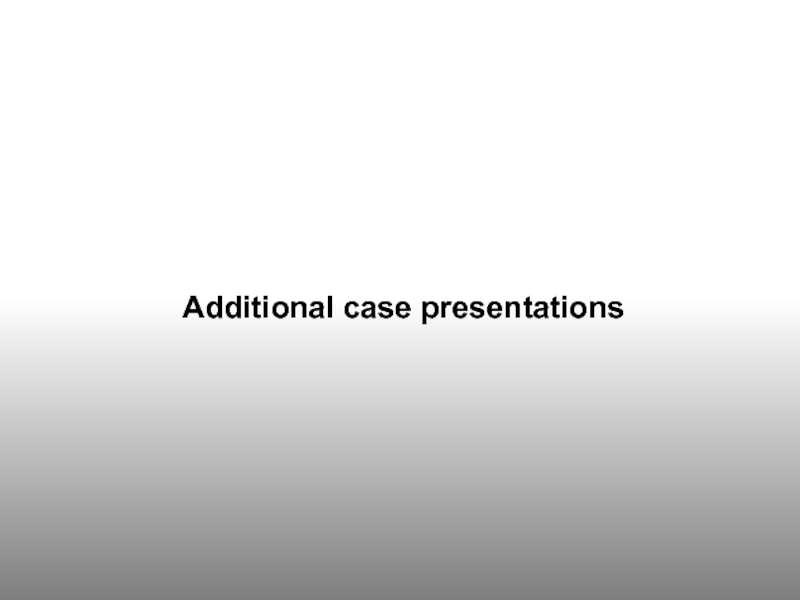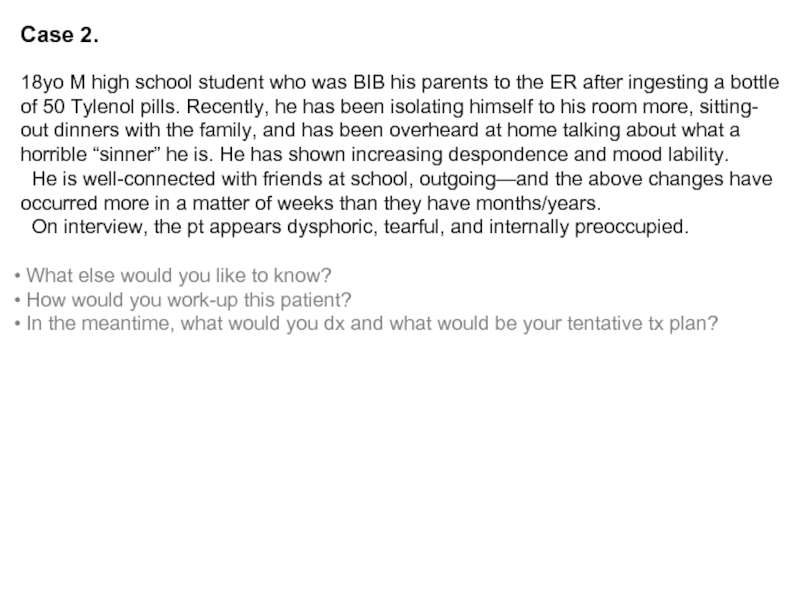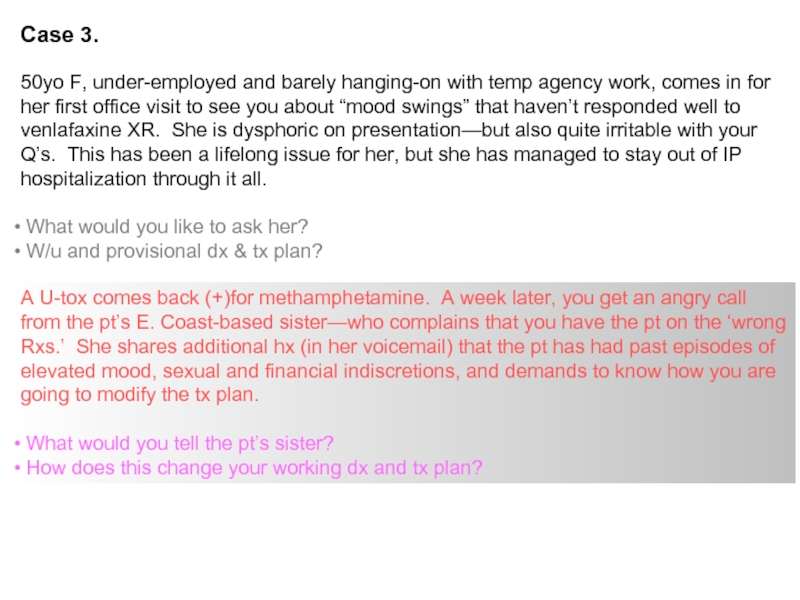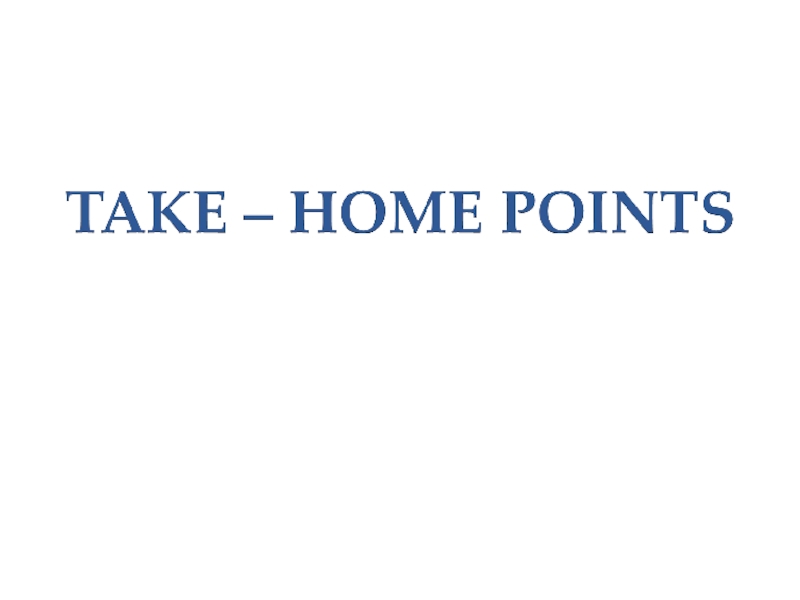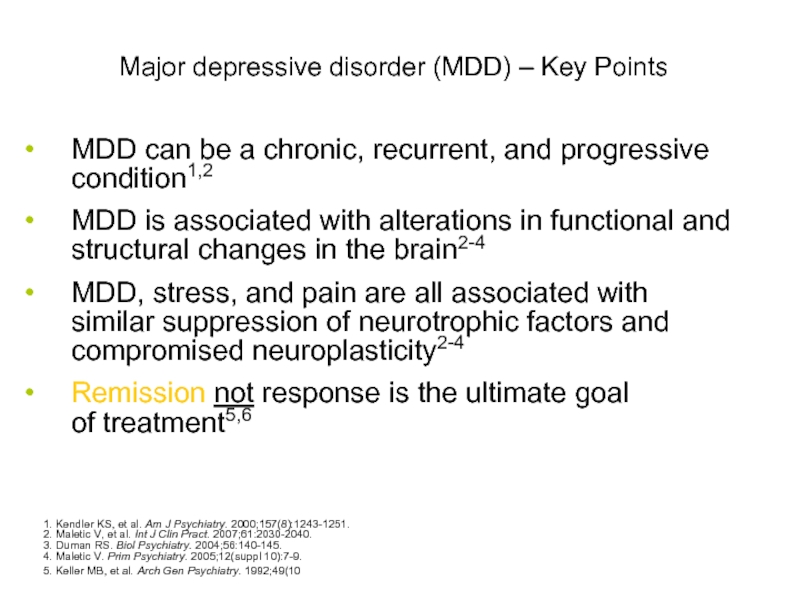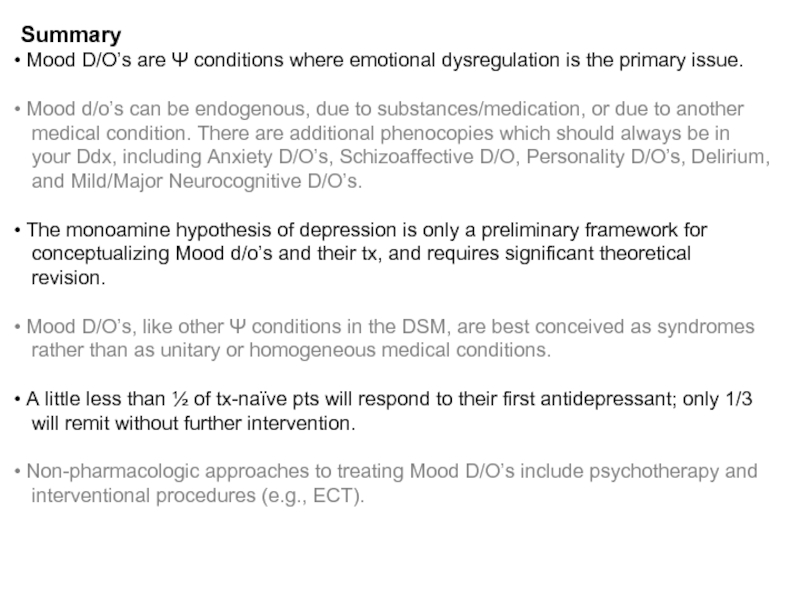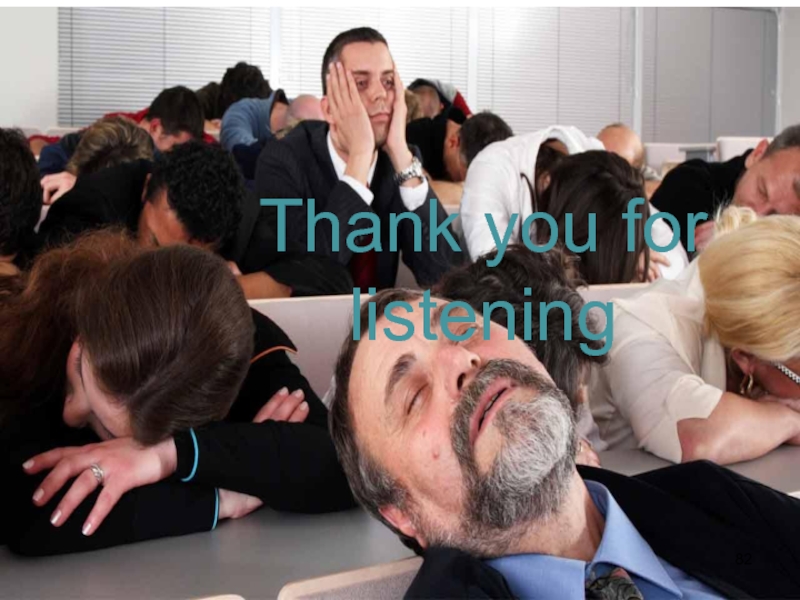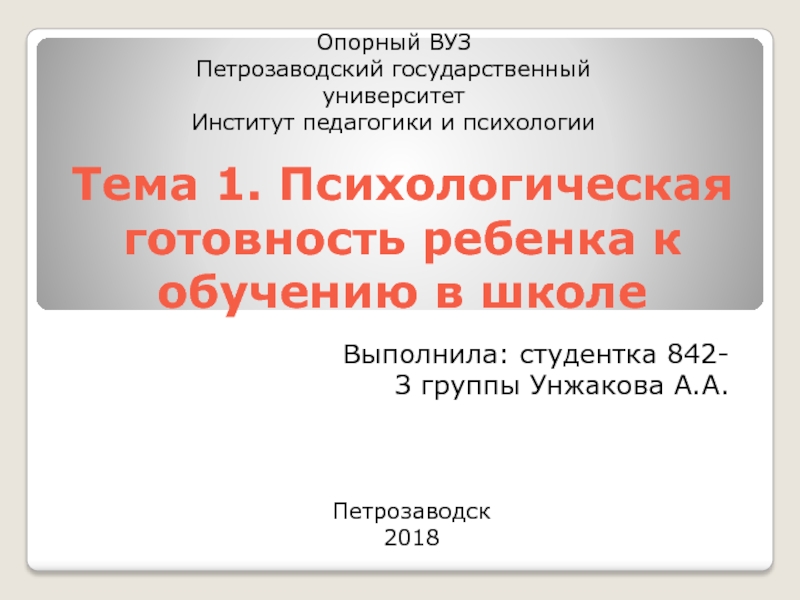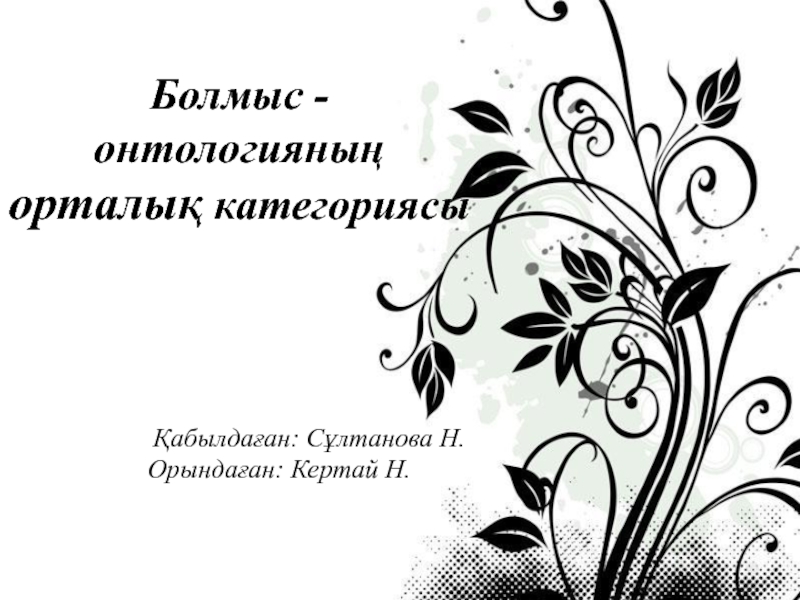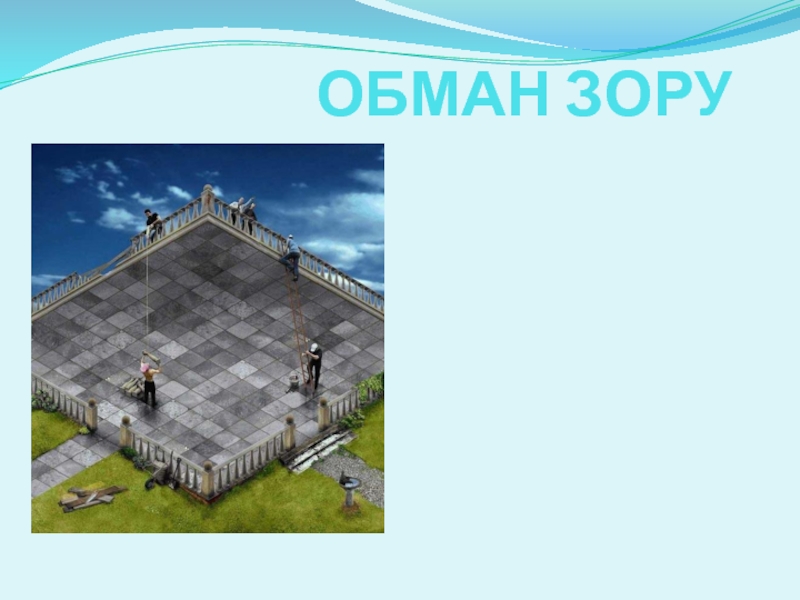Mood Disorders
- Главная
- Разное
- Дизайн
- Бизнес и предпринимательство
- Аналитика
- Образование
- Развлечения
- Красота и здоровье
- Финансы
- Государство
- Путешествия
- Спорт
- Недвижимость
- Армия
- Графика
- Культурология
- Еда и кулинария
- Лингвистика
- Английский язык
- Астрономия
- Алгебра
- Биология
- География
- Детские презентации
- Информатика
- История
- Литература
- Маркетинг
- Математика
- Медицина
- Менеджмент
- Музыка
- МХК
- Немецкий язык
- ОБЖ
- Обществознание
- Окружающий мир
- Педагогика
- Русский язык
- Технология
- Физика
- Философия
- Химия
- Шаблоны, картинки для презентаций
- Экология
- Экономика
- Юриспруденция
Mood Disorders презентация
Содержание
- 1. Mood Disorders
- 2. Objectives Mood, affect, mood disorders
- 3. Mood - The subjective sense indicates
- 4. Mood - The subjective sense indicates
- 5. Mood v. Affect “mood” a
- 6. Major Depressive Disorder
- 7. Economics of Depression — U.S.A. Data -
- 8. Major Depressive D/O (MDD)
- 9. Question: When does a major depressive episode (MDE) ≠ Major Depressive Disorder?
- 10. Major Depressive D/O (MDD) EXCLUSIONS:
- 11. Major depressive disorder w/ anxious distress w/
- 12. Major depressive disorder w/ anxious distress w/
- 13. Major depressive disorder w/ anxious distress w/
- 14. Major depressive disorder w/ anxious distress w/
- 15. Major depressive disorder w/ anxious distress w/
- 16. Major depressive disorder w/ anxious distress w/
- 17. Major depressive disorder w/ anxious distress w/
- 18. Major depressive disorder w/ anxious distress w/
- 19. Belmaker RH and Agam G, NEJM 2008, 358:55-68 iproniazid (1957) imipramine (1959)
- 20. Question: Do antidepressants have additional actions
- 21. Chronic antidepressant treatment increases neurogenesis in adult
- 22. Subsequent hypotheses about MDD altered
- 23. Key brain areas involved in regulation of
- 24. Key brain areas involved in regulation of
- 25. Brain atrophy in depression? 1. Bremner
- 26. Major Depression: Cognition Learned
- 27. Seligman & Beck Seligman Attributions are: Internal
- 28. Cognitive theories Beck’s theory: 31 Character
- 29. Characteristic biases Arbitrary inference Selective abstraction Overgeneralization Magnification and minimization 32
- 30. Behavioral theories Learned helplessness/hopelessness is a behavioral
- 31. Availability of reinforcers The amount of reinforcement
- 32. Interpersonal theory Reduced interpersonal support Experiences of
- 33. MDD tx options selective serotonin
- 34. Sequenced Treatment Alternatives for the Relief of
- 35. Trivedi MH et al, Am J
- 36. MDD tx options Ψtherapy
- 37. Major Depressive D/O (MDD) NATURAL HISTORY
- 38. Kendler KS, et al. Am J Psychiatry.
- 39. Persistent depressive disorder (dysthymia) 2y
- 40. Persistent depressive disorder (dysthymia) may
- 41. Case 1. 36yo F presenting w/
- 42. Premenstrual dysphoric d/o Criterion A. In
- 43. Premenstrual dysphoric d/o (M)ood (labile &/or
- 44. Disruptive mood dysregulation disorder *severe
- 45. Bipolar disorder
- 46. Bipolar D/O (BD) Epidemiology
- 47. Bipolar D/O (BD) Manic episode:
- 48. Bipolar Disorder (BD) EXCLUSIONS: another
- 49. Bipolar Disorder (BD) MORE on ‘w/
- 50. Case 1 - continued Prior
- 51. Case 1 - continued
- 52. Biology of Bipolar D/O (BD)
- 53. *’s 2 accompanying papers (same
- 54. Linkage studies 6q (LOD 4.19
- 55. More on select GWA-identified candidates
- 56. Bipolar Disorder (BD) – treatment The
- 57. John Cade. Ψist at a
- 58. Bipolar Disorder (BD) – treatment (cont’d)
- 59. Bipolar Disorder (BD) – treatment (cont’d)
- 60. Bipolar Disorder (BD) – natural history
- 61. Cyclothymic D/O 2y of fluctuating
- 62. Differential diagnosis
- 63. Phenocopies and gray areas… Anxiety
- 64. Depressive, Bipolar & Related D/O d/t a
- 65. Substance/Medication-induced Depressive, Bipolar & Related D/O
- 66. Mood D/O’s lab w/u CBC
- 67. Summary – cont’d
- 68. 5 Myths and Facts About Suicide Myth
- 69. 5 Myths and Facts About Suicide Myth
- 70. 5 Myths and Facts About Suicide Myth
- 71. 5 Myths and Facts About Suicide Myth
- 72. 5 Myths and Facts About Suicide Myths
- 73. Socio-demographic Risk Factors Male > 60 years
- 74. Clinical Risk Factors Previous Attempts Clinical depression
- 75. Suicide:Treatment Problem-solving Cognitive behavioral therapy Coping skills Stress reduction 47
- 76. Additional case presentations
- 77. Case 2. 18yo M high school
- 78. Case 3. 50yo F, under-employed and
- 80. Major depressive disorder (MDD) – Key Points
- 81. Summary Mood D/O’s are Ψ conditions
- 82. ``qw0 Thank you for listening
Слайд 1Prof. Anatoly Kreinin MD, PhD
Maale Carmel Mental Health Center, affiliated to
Слайд 2Objectives
Mood, affect, mood disorders (mood D/O’s)
Nosology, epidemiology, treatment (tx)
Major depressive disorder (MDD)
Persistent depressive disorder
Premenstrual dysphoric disorder
Disruptive mood dysregulation disorder
Bipolar disorder (BD)
Cyclothymic disorder
Differential diagnosis (Ddx), including:
Depressive v. bipolar & related disorder due to another medical condition
Substance/medication-induced depressive v. bipolar & related disorder
Other specified depressive v. bipolar & related disorder
Unspecified depressive v. bipolar & related disorder
Слайд 3
Mood - The subjective sense indicates the long, deep and constant
Affect - An objective impression of the examiner or other persons, and marks the passing and instantaneous emotion expressed in the present and observable
Not compatible or compatible with the content of thinking
The situation ...
In normal mode a person moves in range of MOODS with varying degrees of control
Mood disorders control the patient
Слайд 4
Mood - The subjective sense indicates the long, deep and constant
Affect - An objective impression of the examiner or other persons, and marks the passing and instantaneous emotion expressed in the present and observable
Not compatible or compatible with the content of thinking
The situation ...
In normal mode a person moves in range of MOODS with varying degrees of control
Mood disorders control the patient
Слайд 5Mood v. Affect
“mood”
a sustained emotional attitude
typically garnered through pt
“affect”
the way a pt’s emotional state is conveyed
relates more to others’ perception of the pt’s emotional state, responsiveness
Mood disorders
Ψ conditions where mood is primary, the predominant problem.
Слайд 7Economics of Depression —
U.S.A. Data - Total Annual Cost ~$44 Billion
9
Lost
Suicide—17%
Pharmaceuticals—3%
Inpatient care—19%
Outpatient care—6%
Слайд 8Major Depressive D/O (MDD)
Diagnosis req’s ≥1 major depressive episode (MDE)
MDE =
signif wt Δ (↓ or ↑)
insomnia or hypersomnia
Ψmotor agitation/retardation (PMA/PMR)
fatigue or anergia
guilt/worthlessness (G/W)
↓’d [ ]
recurrent thoughts of death or SI
↓’d mood
anhedonia
Sleep
Interest
Guilt
Energy
Concentration
Appetite
Psychomotor
Suicide
5 symptoms (with ≥1 sx in blue)
Epidemiology (Kendler et al, 1993; Schlesser & Altshuler, 1983)
leading cause of disability among adults under 45y of age
lifetime prevalence of 12% in ♂, 20% in ♀
relative risk (RR) of 2-3 in 1o relatives of probands; 41%:13% (monozygotic:
dizygotic) concordance
incidence peaks in 20s (but onset in late life not uncommon)
Слайд 10Major Depressive D/O (MDD)
EXCLUSIONS:
not attributable to a substance/medication or another
no prior [endogenous] episodes of mania or hypomania
Regarding bereavement:
no longer a formal exclusion in DSM-5 because:
the ‘2 month’ rule did not reflect reality
the depressive feelings associated with bereavement-related
depression respond to the same psychosocial and Rx txs
evidence does not support a different natural course once criteria
are met for an MDE…
use your clinical judgment, consider norms for the individual, his/her hx,
culture
consider: pangs of grief, preserved self-esteem (v. self-loathing), guilt of
failing the deceased (v. more general self-criticism), etc.
Слайд 11Major depressive disorder
w/ anxious distress
w/ mixed features
w/ atypical features
w/ melancholic features
w/
psychotic features
w/ catatonia
w/ peripartum onset
w/ seasonal pattern
≥2 of the following:
keyed-up/tense
unusually restless
can’t concentrate b/c of worry
fear something awful may happen
might lose control
Слайд 12Major depressive disorder
w/ anxious distress
w/ mixed features
w/ atypical features
w/ melancholic features
w/
psychotic features
w/ catatonia
w/ peripartum onset
w/ seasonal pattern
≥3 of the following nearly everyday during an MDE:
[drawn from list of sxs for a manic/hypomanic episode, minus distractibility;
this list includes elevated/expansive mood, insomnia, grandiose, flight of Ideas, activity (goal-directed), sexual, talkative (i.e., pressured speech)]
Слайд 13Major depressive disorder
w/ anxious distress
w/ mixed features
w/ atypical features
w/ melancholic features
w/
psychotic features
w/ catatonia
w/ peripartum onset
w/ seasonal pattern
≥1 of the following during the most severe portion of the current episode:
absolute anhedonia or absolute mood non-reactivity
plus ≥3 of the following:
a distinct quality of depressed mood (e.g., worse than prior MDEs)
worse in the AM
early AM awakening (by at least 2h)
marked PMA or PMR
significant appetite or wt loss
excessive guilt
Слайд 14Major depressive disorder
w/ anxious distress
w/ mixed features
w/ atypical features
w/ melancholic features
w/
psychotic features
w/ catatonia
w/ peripartum onset
w/ seasonal pattern
mood reactivity
plus ≥2 of the following:
significant appetite or wt increase
hypersomnia
long-standing interpersonal rejection sensitivity leading to social/work problems
Слайд 15Major depressive disorder
w/ anxious distress
w/ mixed features
w/ atypical features
w/ melancholic features
w/
psychotic features
w/ catatonia
w/ peripartum onset
w/ seasonal pattern
delusions &/or hallucinations
examples of congruent delusions: personal inadequacy, guilt, death, nihilism,
deserved punishment
Слайд 16Major depressive disorder
w/ anxious distress
w/ mixed features
w/ atypical features
w/ melancholic features
w/
psychotic features
w/ catatonia
w/ peripartum onset
w/ seasonal pattern
during most of the episode, ≥3 of the
following:
stupor
catalepsy (passive induction of a posture
held against gravity)
waxy flexibility
mutism
negativism
posturing (spontaneous, maintenance
against gravity)
mannerism (odd cariacture of a
normal action)
stereotypy
agitation (indep of external stimulus)
grimacing
echolalia or echopraxia
Слайд 17Major depressive disorder
w/ anxious distress
w/ mixed features
w/ atypical features
w/ melancholic features
w/
psychotic features
w/ catatonia
w/ peripartum onset
w/ seasonal pattern
during pregnancy or in the 4wks after delivery
Слайд 18Major depressive disorder
w/ anxious distress
w/ mixed features
w/ atypical features
w/ melancholic features
w/
psychotic features
w/ catatonia
w/ peripartum onset
w/ seasonal pattern
relapses and remissions occur at characteristic times of the year
at least 2 seasonal MDE’s in the last 2y (and no non-seasonal MDEs during this
period)
seasonal episodes outnumber non-seasonal episodes (lifetime)
If a patient always gets depressed with season unemployment (or the beginning
of the school year), would we call this ‘w/ seasonal pattern?’
No.
Слайд 20Question:
Do antidepressants have additional actions besides inhibition of reuptake transporters?
“…the Zoloft
from: http://gifsoup.com/webroot/animatedgifs/50426_o.gif;
chemical inbalance
Слайд 21Chronic antidepressant treatment increases neurogenesis in adult rat
hippocampus.
Malberg JE, Eisch AJ,
J Neurosci. 2000 Dec 15;20(24):9104-10
Requirement of hippocampal neurogenesis for the behavioral effects of
antidepressants.
Santarelli L, Saxe M, Gross C, Surget A, Battaglia F, Dulawa S,
Weisstaub N, Lee J, Duman R, Arancio O, Belzung C, Hen R.
Science. 2003 Aug 8;301(5634):805-9.
Depression and antidepressants: insights from knockout of dopamine,
serotonin or noradrenaline re-uptake transporters.
Haenisch B, Bönisch H.
Pharmacol Ther. 2011 Mar;129(3):352-68. Epub 2010 Dec 13. Review.
Nicotinic acetylcholine receptor antagonistic activity of monoamine
uptake blockers in rat hippocampal slices.
Hennings EC, Kiss JP, De Oliveira K, Toth PT, Vizi ES.
J Neurochem. 1999 Sep;73(3):1043-50.
Block of an ether-a-go-go-like K(+) channel by imipramine rescues egl-2
excitation defects in Caenorhabditis elegans.
Weinshenker D, Wei A, Salkoff L, Thomas JH.
J Neurosci. 1999 Nov 15;19(22):9831-40.
photo from: http://www.sciencedaily.com/releases/2006/11/061121082449.htm
Слайд 22Subsequent hypotheses about MDD
altered glutamatergic transmission
↓’d GABAergic transmission
monoamine-Ach imbalance
disruption of endogenous
neurosteroid deficiencies
thyroxine abnormalities
cytokine-mediated x-talk betw immune system & CNS
circadian abnormalities
(specific brain structure/circuit dysfxns…)
as summarized in Belmaker RH and Agam G, NEJM 2008, 358:55-68
Слайд 23Key brain areas involved in regulation of mood
(A) Ventromedial prefrontal cortex
Modulates pain and aggression, and sexual and eating behaviors
Regulates autonomic and neuroendocrine response
(B) Lateral orbital prefrontal cortex (LOPFC)2
Activity is increased in depression, obsessive-compulsive disorder (OCD), posttraumatic stress disorder (PTSD), and panic disorder
Corrects and inhibits maladaptive, perseverative, and emotional responses
(C) Dorsolateral prefrontal cortex (DLPFC)3
Cognitive control, solving complex tasks, and manipulation of information in working memory
Hypoactivity of DLPFC in depression has been associated with neuropsychological manifestation of depression
A4
B4
C4
1. Öngür D, Price JL. Cereb Cortex. 2000;10(3):206-219.
2. Drevets WC. Annu Rev Med. 1998;49:341-361.
3. MacDonald AW III, et al. Science. 2000;288(5472):1835-1838.
4. Davidson RJ, et al. Annu Rev Psychol. 2002;53:545-574.
Слайд 24Key brain areas involved in regulation of mood (cont.)
(A) Amygdala: regulates
Role in emotional learning and memory
Activation of amygdala correlates with degree of depression2
Implicated in tendency to ruminate on negative memories2
(B) Hippocampus: has a role in episodic, contextual learning and memory3,4
Rich in corticosteroid receptors5
Regulatory feedback to hypothalamic-pituitary- adrenal axis
Hippocampal dysfunction may be responsible for inappropriate emotional responses
53
A6
B6
Davidson RJ. Psychophysiology. 2003;40(5):655-665.
Drevets WC. Curr Opin Neurobiol. 2001;11(2):240-249.
Squire LR, Knowlton BJ. In: Gazzaniga MS, ed. The New Cognitive Neurosciences; 2000:765-779.
4. Fanselow MS. Behav Brain Res. 2000;110(1-2):73-81.
5. Reul JM, De Kloet ER. J Steroid Biochem. 1986;24(1):269-272.
6. Davidson RJ, et al. Annu Rev Psychol. 2002;53:545-574.
Слайд 25Brain atrophy in depression?
1. Bremner JD, et al. Am J Psychiatry.
2. Images courtesy of J Douglas Bremner, MD, Yale University.
Atrophy of the Hippocampus in Depression1
Normal2
Depression2
Слайд 26Major Depression: Cognition
Learned helplessness (Seligman) (Seligman & Maier,
Attribution of lack of control over stress leads to anxiety and
depression
Depressive attributional style is internal, stable, and global
Negative cognitive styles (Beck)
Depression is the result of negative interpretations (wearing gray instead of rose colored glasses, e.g. Eeyore in Winnie the Pooh)
Key Components of Negative Interpretations
Maladaptive attitudes (negative schema) 'I'm no good' (self), 'Others can't be trusted' ( others) and effort does not pay off' (world)
Automatic thoughts
Cognitive triad
Errors in thinking
29
Слайд 27Seligman & Beck
Seligman
Attributions are:
Internal
Stable
Global
I am inadequate (internal) at everything (global) and
“Dark glasses about why things are bad”
30
Beck (NegativeTriad)
Negative interpretations about:
Themselves
Immediate world
Future
I am not good at school (self). I hate this campus (world). Things are not going to go well in college (future).
“Dark glasses about what is going on”
Слайд 28Cognitive theories
Beck’s theory:
31
Character of pessimism (NegativeTriad)
Habits of negativity (Negative schemas)
Erroneous thinking
DEPRESSION
Слайд 29Characteristic biases
Arbitrary inference
Selective abstraction
Overgeneralization
Magnification and minimization
32
Слайд 30Behavioral theories
Learned helplessness/hopelessness is a behavioral theory with a cognitive twist.
Reduction
Depressive behaviors are reinforced.
Depressed people have taken part in fewer pleasant events.
34
Слайд 31Availability of reinforcers
The amount of reinforcement available is a function of
Personal
Environment or milieu
Repertoire of reinforcement-producing behaviors.
35
Слайд 32Interpersonal theory
Reduced interpersonal support
Experiences of rejection
Due to social structure
Inadequate social networks
Others
Elicited by patient
Consequences of behavioral choices
Critical comments by spouse
Poor social skills and seeking reassurance
33
Слайд 33MDD tx options
selective serotonin reuptake
inhibitors (SSRIs)
fluoxetine (PROZAC), 20-80
citalopram (CELEXA), 20-40 mg/d
escitalopram (LEXAPRO), 10-20 mg/d
sertraline (ZOLOFT), 50-200 mg/d
paroxetine (PAXIL), 20-50 mg/d
serotonin-norepinephrine reuptake
inhibitors (SNRIs)
venlafaxine XR (EFFEXOR XR),
37.5-225 mg/d
desvenlafaxine (PRISTIQ)
duloxetine (CYMBALTA), 30-120 mg/d
others
bupropion SR, XL (WELLBUTRIN)
100-200 mg BID (SR)
150-450 mg/d (XL)
mirtazapine (REMERON), 15-45 mg/d
trazodone, 50-200mg/noc (for sleep)
nefazodone
tricyclic antidepressants (TCADs)
amitriptyline → nortriptyline
imipramine → desipramine
monoamine oxidase inhibitors (MAO-Is)
typically, non-selective & irreversible
MAO-A (NE, EPI, 5HT, DA)
MAO-B (trace amines, DA)
why we “wash-out”
5HT syndrome
HTNsive crisis
selegiline (EMSAM)
[additional] augmenting agents
Li+
T3, 25 mcg/d
buspirone (BuSPAR), 5-30 mg BID
atypical antipsychotics
Слайд 34Sequenced Treatment Alternatives for the Relief of Depression
(STAR*D)
major NIMH-funded study
sites
initial enrollment of 4,041 patients
aim: which tx algorithms work best after an initial failure to remit non-psychotic
depression w/ an antidepressant?
http://www.clinicaltrials.gov/ct/show/NCT00021528?order=1
Слайд 35 Trivedi MH et al, Am J Psychiatry. 2006 Jan;163(1):28-40
47%
on citalopram
(by *QIDS-SR, 50% ↓
in sxs)
Sequenced Treatment Alternatives for the Relief of Depression
(STAR*D), n = 2,876 (qualifying pts)
33% remission rate
on citalopram
(by QIDS-SR, score <5)
Rx choice:
according to side effects (SE’s), comorbid condn’s / risks (GMC & Ψ), ?FmRxHx
6-8wk trials each (preferable)
augmentation v. switch?
*QIDS-SR = Quick Inventory of Depressive Symptomatology, Self-Report (range 0-27)
http://www.ids-qids.org/
Слайд 36MDD tx options
Ψtherapy
cognitive bx therapy (CBT)
interpersonal therapy (IPT)
interventional Ψ
electroconvulsive therapy (ECT)
transcranial magnetic stimulation (TMS)
vagal nerve stimulation (VNS)
deep brain stimulation (DBS)
other
lightbox therapy (mostly for MDD w/ seasonal features)
Слайд 37Major Depressive D/O (MDD)
NATURAL HISTORY (Frank E and Thase ME, 1999
recovery usually begins:
w/in 3mos for two in five indivs
w/in 1y for four in five indivs
risk of subsequent episodes (w/in 3y) increases w/ n:
≥50% if n=1
≥70% if n=2
≥90% if n=3
dz course does not typically change as one ages
5-10% will eventually be dx’d w/ bipolar disorder (BD)
more likely w/:
onset of ‘MDD’ in adolescence
a family history of BD
‘mixed features’
6% lifetime SUI risk (Davies S et al, 2001); up to 15% w/ severe MDD
Слайд 38Kendler KS, et al. Am J Psychiatry. 2000;157(8):1243-1251.
Number of Previous Depressive
10
Risk (Odds Ratio)
0
1
2
3
4
5
6
7-8
0
2
4
6
8
9-11
Female subjects only N=2395
Likelihood of recent life stress precipitating depression
Risk (OR) of depression onset per month
Progression of depression — “kindling” phenomenon: Adverse effects of each successive episode
11
Слайд 39Persistent depressive disorder (dysthymia)
2y of depressed mood (1y in children/adolescents)
not, plus 2 of the following:
appetite disturbance (↓ or ↑) veg
sleep disturbance (↓ or ↑) veg
↓energy E
↓esteem E
poor [ ] C
hopeless H
never sx-free for more than 2mos at a time
overlapping dx of MDD is now allowed
there has never been mania, hypomania, or cyclothymia
MDD specifiers can also be used for dysthymia
additionally:
early onset (before age 21)
late onset (at age 21 or older)
w/ pure dysthymic syndrome
from DSM-5
Слайд 40Persistent depressive disorder (dysthymia)
may be more treatment-resistant (TxR) than straightforward
EPIDEMIOLOGY
lifetime prevalence = 6%
12-mo prevalence = 0.5%, compared w/ 1.5% for MDD
high comorbidity w/ personality d/o’s (particularly clusters B, C)
From Sadock & Sadock & DSM-5
Слайд 41Case 1.
36yo F presenting w/ 3mos of ↓mood. She reports getting
of regular early AM awakenings. She feels drained everyday, all day long. She’s
gained about 4.5 kg in the last 2mos.
What else would you like to ask?
How would you work-up this patient?
In the meantime, what would you dx and what would be your tentative tx plan?
She returns 1mo later and reports that her mood continues to spiral downward. Now,
she adds that she’s starting to think more morbid thoughts and that maybe it wouldn’t
be such a bad thing if she weren’t around anymore.
What would you ask now?
How would you revise your tx plan?
The pt’s sxs are finally stabilized and she returns at a later date w/ her sxs in remission
x 1mo. “Doctor, I’m feeling so much better now. Do you think I can stop my psych
Rxs?”
How would you answer?
Слайд 42Premenstrual dysphoric d/o
Criterion A. In most menstrual cycles, ≥5 sxs in
w/ improvement w/in a few days after onset of menses, and near-absent in the week
post-menses
Criterion B. ≥1 (or more) sx of marked:
1. lability (e.g., mood swings, suddenly sad, increased rejection sensitivity)
2. irritability /anger / increase in interpersonal conflicts
3. anxiety / tension / keyed-up feeling/edginess
Criterion C. ≥1 (or more) sx to reach a total of 5 in combation w/ previous list:
1. anhedonia
2. [ ] impairment
3. anergia
4. significant appetite change (including specific food cravings)
5. sleep disturbance (↑ or ↓)
6. feeling overwhelmed or out of control
7. px sxs (e.g., breast tenderness/swelling, arthralgias/myalgias, bloating, wt gain)
Special notes. Can’t just be menstrual exacerbation of MDD or other Axis I or II dx;
must have confirmation by prospective daily rating scales during at least 2 sx-ic
cycles (provisional dx allowed beforehand)
Слайд 43Premenstrual dysphoric d/o
(M)ood (labile &/or irritable &/or anxious)
Sleep
Interest
Body
Energy
Concentration
Appetite
Out of control
Treatment:
SSRI
luteal phase only (i.e., day 14 of cycle → menses)
some data suggest
Слайд 44Disruptive mood dysregulation disorder
*severe recurrent temper outbursts (verbal or behavior)
the situation
the outbursts are not developmentally appropriate
on average, outbursts are ≥ 3x/wk
*inter-episode mood is typically irritable, corroborated by others
sxs present for ≥ 12mos, w/ no more than 3 consecutive mos attenuated or sx-free
2 of 3 settings (*outbursts & *irritability), at least 1 of which w/ severe manifestations
ages 6-18 only; onset must be before age 10
no more than 1d of mania/hypomania
Designed to avoid excessive dx of bipolar disorder (BD) in children. Meant to capture
non-episodic irritability (v. discrete, episodic irritability of bipolar).
→
Слайд 46Bipolar D/O (BD)
Epidemiology
Diagnostic criteria:
BD I
≥ 1 manic episode
MDE
BD II
≥ 1 hypomanic episode
≥ 1 MDE
(Cyclothymic D/O)
2y of subsyndromal depression + subsyndromal hypomania
Background from Sadock & Sadock, 2003; Strahl NR, 2005; DSM-5
Слайд 47Bipolar D/O (BD)
Manic episode:
elevated mood & ≥1wk of at least
Hypomanic episode:
elevated mood & ≥4d of at least 3 of the above sxs (4 if mood irritable)
NO significant fxn’l impairment, but an unmistakeable change in fxn
uncharacteristic for the individual when asymptomatic that is appreciable
by others.
(contrast w/ BD II…)
Depressive episode (MDE):
(previously defined)
Distractible
Insomnia (actually, ↓’d need for sleep)
Grandiose
Flight Of Ideas
Activity (goal-directed)
Sexual (or spending or other activities w/
↑↑potential for painful consequences)
Talkative (i.e., pressured speech)
Слайд 48Bipolar Disorder (BD)
EXCLUSIONS:
another medical cause
substance/medication causes
SPECIFIERS:
same as w/
rapid cycling (4 mood episodes / 1yr) (Bauer M et al, 2008)
affects 10-20% BD pts
can be more TxR
2/3 are ♀
NOTES:
By the numbers (as detailed in Barondes S, Mood Genes):
1% risk of BD goes to 7% w/ one 1o relative; ~49% w/ two parents.
1% risk of BD stays at 1% w/ a single 2o relative (aunt, uncle, grandparent)
and no affected 1o relatives.
Слайд 49Bipolar Disorder (BD)
MORE on ‘w/ mixed features’…
IF full criteria met
‘mixed episodes’ (as defined in DSM-IV) do not exist in DSM-5.
mixed presentations =
‘dysphoric mania’
‘activated depression’
Sleep
Interest
Guilt
Energy
Concentration
Appetite
Psychomotor
Suicide
Distractible
Insomnia (actually, ↓’d need for sleep)
Grandiose
Flight Of Ideas
Activity (goal-directed)
Sexual (or spending or other activities w/
↑↑potential for painful consequences)
Talkative (i.e., pressured speech)
Слайд 50
Case 1 - continued
Prior hx to date:
36yo F w/ 3mos
tx’d w/ an SSRI
sxs improved, asked if she could DC her SSRI, and advised against doing so
After your intervention, the pt agrees to remain on her Rxs and continues to do well
for the next wk. Sometime later, you receive a call from her husband who reports
that the pt has been up all night every night for about 3 or 4 nights in-a-row, making
consecutive (and very uncharacteristic) $500-1,000 purchases on eBay--and has
drilled two large holes in the ceiling of their home (without checking with anyone else
first) to create some new “skylights.”
How would you revise your dx?
What changes would you make to your tx plan?
Слайд 51Case 1 - continued
Is manic switch a real concern?
mood stabilizer
antidepressant = paroxetine or bupropion
Sachs GS et al, NEJM 2007. 356:17.
*8 consecutive wks of euthymia
zby 16wks or w/o durable recovery (out to 26wks)
Per DSM-5:
“A full manic/hypomanic episode that emerges during antidepressant tx but persists
at a fully syndromal level beyond the physiological effect of that tx is sufficient
evidence for a manic/hypomanic episode dx. However, caution is indicated so that
one or two symptoms are not taken as sufficient…nor necessarily indicative of a
bipolar diathesis.”
Слайд 52Biology of Bipolar D/O (BD)
failure of linkage studies
Janice Egeland
work w/ Old Order Amish, BAD [ ]’d in
particular Fm’s
David Housman – restriction fragment
length polymorphism (RFLP) approach;
started w/ chr11 (b/c of concurrent
work w/ anemias, thalassemias)
Pedigree 110:
19 of 81 members w/ mood d/o;
14 w/ mania + depression;
5 w/ only depression
Слайд 53*’s
2 accompanying papers (same issue of Nature) unable to replicate
in independent pedigrees
just 2 yrs later:
2 previously negative indivs (pedigree 110) became ill
addn’l branches of pedigree 110 strongly excluded chr11
linkage scores [i.e., log(differentiation) scores] now close to zero
Слайд 54
Linkage studies
6q (LOD 4.19 narrow), 8q (LOD 3.40 broad) (still
et al, 2005)
Genome-wide association studies (GWAS)
Wellcome Trust (2007) – strongest signal at rs420259 (chr16p12)
intronic to PALB2 (partner & localizer of BRCA2), assoc’d w/ medulloblastoma
same signal might be more relevant to DCTN5 (dynactin 5)
Psychiatric GWAS Consortium meta-analysis, 2011 (Nat Genet 43:977)
11 GWA samples, 7,481 cases v. 9,250 controls
Biology of Bipolar D/O (BD)
from Nat Genet 2011, 43:977
Слайд 55More on select GWA-identified candidates
CACNA1C
α1 subunit of a voltage-dependent
per citations in PGC paper, separate literature has associated mutations w/
brain imaging changes (both strux and fxnl)
also an assoc’n finding in schizophrenia, MDD (not genomewide-significant)
ANK3
ankyrin G
isoforms specific to nervous system
localization in axonal initial segments, nodes of Ranvier
fxn in ion channel maintenance? cell adhesion?
SYNE1
synaptic nuclear envelope protein 1
not emphasized in PGC paper, but has prior literature in syndromes r/t ataxia,
muscular dystrophy, mental retardation
ODZ4
odd oz / ten-m homolog 4
pair-rule gene
cell-surface signalling, neuronal pathfinding
Слайд 56Bipolar Disorder (BD) – treatment
The old standard:
mood stabilizer + reuptake
Debunked:
gabapentin (NEURONTIN)
topirimate (TOPAMAX)
Слайд 57John Cade.
Ψist at a provincial hospital in Australia
figured mania
collected urine from human pts (manic) → injected into
guinea pigs → seizures (SZ’s)
focused on urate, and began utilizing Li-urate (since Na-
urate was more insoluble)
Li-urate → sedated guinea pigs
Li-carbonate → sedated guinea pigs
human trials…
Слайд 58Bipolar Disorder (BD) – treatment (cont’d)
Li+ v. Depakote / valproate (VPA)
Li+ tends to have a more favorable response in tx-naïve cases than in BD indivs w/
longer tx hxs
VPA may be >successful in tx’ing mixed episodes, BD indivs w/ comorbid
substance issues
Areas of concern:
Li+ ↔ renal; interaction w/ NSAIDs
VPA ↔ liver; VPA in young ♀ → polycystic ovarian syndrome (PCOS)
Teratogenicity
Li+ → Ebstein’s anomaly (1st trimester)
hazard ratio 10-20, but AR still 1:1000
VPA → neural tube defects
AR 10%
OTHER NOTES:
CBZ: auto-induction, agranulocytosis
Lamictal: Stevens-Johnson syndrome (SJS), interaxn w/ oral contraceptives (OCPs),
interaxn w/ VPA
Слайд 59Bipolar Disorder (BD) – treatment (cont’d)
How many agents to use?
combination
antipsychotics REQ’D when there are psychotic features to mood episode
Adjuncts
benzos
--Don’t forget about ECT…
Manic switch w/…
reuptake blockers
Lamictal, too! (van der Loos ML et al, 2009)
Слайд 60Bipolar Disorder (BD) – natural history
60% of manic episodes immediately
MDE’s usually significantly outnumber hypomanic and manic episodes
~10% of BD II’s → BD I
episodes tend to increase in frequency/duration w/ age
re: suicide…
35% lifetime prevalence of at least one SUI attempt in bipolar
15% suicide completion rate (may be an overestimate)
15x the risk of the general population (for completions)
perhaps ¼ of all suicides in the population
>lethality of SUI attempts in BD II (than BD I)
adapated, in part,from DSM-5
Слайд 61Cyclothymic D/O
2y of fluctuating mood (1y in children, adolescents)
hypomanic
dysthymic symptoms (but no MDEs)
≥ half the time & (no more than 2mos sx-free)
EXCLUSIONS
no manic/hypomanic episodes
no depressive episodes
Слайд 63Phenocopies and gray areas…
Anxiety D/O’s (esp. GAD, PTSD)
Schizoaffective D/O
Dementia
Personality D/O’s
Substance/Medication-induced Depressive D/O
Depressive D/O d/t Another Medical Condition
Other Specified Depressive D/O
Unspecified Depressive D/O
Substance/Medication-induced Bipolar and Related D/O
Bipolar and Related D/O d/t Another Medical Condition
Other Specified Bipolar and Related D/O
Unspecified Bipolar and Related D/O
Слайд 64Depressive, Bipolar & Related D/O d/t a Another Medical Condition
Endocrine
Neurologic (e.g., multiple sclerosis, CVA, brain tumor, Parkinson’s, Alzheimer’s/other
dementia, Huntington’s, seizure d/o)
Neoplastic (e.g., pancreas)
TBI
Autoimmune (e.g., neuropsychiatric systemic lupus erythematosus / NPSLE)
Hematologic (e.g., acute intermittent porphyria / AIP)
typically: anx/depr >> s/t Ψosis, mania (rare)
acute abdominal pain, muscle weakness
port wine-colored urine (porphobilinogen)
transient damage to nerve cells
Nutritional (e.g., B12)
Infectious (e.g., HIV, Syphilis)
Слайд 65Substance/Medication-induced Depressive, Bipolar & Related D/O
ILLICITS
can be from intoxication or
EtOH – typically depressive
stimulants – typically manic/hypomanic
--good to ask about sxs during windows of sobriety (ideally, ≥6mos)
high substance comorbidity rates w/ endogenous Axis I Ψ d/o’s, though (esp. BD I)
Prescription Rxs
steroids
IFN-α2b, RBV (HCV tx)
β-blockers
antidepressants
α-TB drugs
Слайд 66Mood D/O’s lab w/u
CBC
Chem panel
TSH
B12
U-tox
U-preg
RPR (syphilis)
HIV-1,2 ELISA (lower threshold for BD patients…)
Слайд 685 Myths and Facts About Suicide
Myth #1:
People who talk about killing
40
Fact:
Most people who commit suicide have given some verbal clues or warnings of their intentions
Слайд 695 Myths and Facts About Suicide
Myth #2:
The suicidal person wants to
41
Fact:
Suicidal people are usually ambivalent about dying; they may desperately want to live but can not see alternatives to problems.
Слайд 705 Myths and Facts About Suicide
Myth # 3:
If you ask someone
42
Fact:
The opposite is true. Asking lowers their anxiety and helps deter suicidal behavior. Discussion of suicidal feelings allow for accurate risk assessment.
Слайд 715 Myths and Facts About Suicide
Myth # 4:
All suicidal people are
43
Fact:
Although suicide is usually associated with depression, not all suicidal people are obviously depressed. Once they make the decision, they may appear happier/carefree.
Слайд 725 Myths and Facts About Suicide
Myths # 5:
Suicidal people rarely seek
44
Fact:
75% of suicidal individuals will visit a physician within the month before they kill themselves.
Слайд 73Socio-demographic Risk Factors
Male
> 60 years
Widowed or Divorced
White or Native American
Living alone
Unemployed (financial difficulties)
Recent adverse life events
Chronic Illness
45
Слайд 74Clinical Risk Factors
Previous Attempts
Clinical depression or schizophrenia
Substance Abuse
Feelings of hopelessness
Severe anxiety,
Severe loss of interest in usual activities
Impaired thought process
Impulsivity
46
Слайд 75Suicide:Treatment
Problem-solving
Cognitive behavioral therapy
Coping skills
Stress reduction
47
Слайд 77Case 2.
18yo M high school student who was BIB his parents
of 50 Tylenol pills. Recently, he has been isolating himself to his room more, sitting-
out dinners with the family, and has been overheard at home talking about what a
horrible “sinner” he is. He has shown increasing despondence and mood lability.
He is well-connected with friends at school, outgoing—and the above changes have
occurred more in a matter of weeks than they have months/years.
On interview, the pt appears dysphoric, tearful, and internally preoccupied.
What else would you like to know?
How would you work-up this patient?
In the meantime, what would you dx and what would be your tentative tx plan?
Слайд 78Case 3.
50yo F, under-employed and barely hanging-on with temp agency work,
her first office visit to see you about “mood swings” that haven’t responded well to
venlafaxine XR. She is dysphoric on presentation—but also quite irritable with your
Q’s. This has been a lifelong issue for her, but she has managed to stay out of IP
hospitalization through it all.
What would you like to ask her?
W/u and provisional dx & tx plan?
A U-tox comes back (+)for methamphetamine. A week later, you get an angry call
from the pt’s E. Coast-based sister—who complains that you have the pt on the ‘wrong
Rxs.’ She shares additional hx (in her voicemail) that the pt has had past episodes of
elevated mood, sexual and financial indiscretions, and demands to know how you are
going to modify the tx plan.
What would you tell the pt’s sister?
How does this change your working dx and tx plan?
Слайд 80Major depressive disorder (MDD) – Key Points
MDD can be a chronic,
MDD is associated with alterations in functional and structural changes in the brain2-4
MDD, stress, and pain are all associated with similar suppression of neurotrophic factors and compromised neuroplasticity2-4
Remission not response is the ultimate goal of treatment5,6
1. Kendler KS, et al. Am J Psychiatry. 2000;157(8):1243-1251.
2. Maletic V, et al. Int J Clin Pract. 2007;61:2030-2040.
3. Duman RS. Biol Psychiatry. 2004;56:140-145.
4. Maletic V. Prim Psychiatry. 2005;12(suppl 10):7-9.
5. Keller MB, et al. Arch Gen Psychiatry. 1992;49(10):809-816.
6. APA. Am J Psychiatry. 2000;157(4 suppl):1-45.
Слайд 81Summary
Mood D/O’s are Ψ conditions where emotional dysregulation is the
Mood d/o’s can be endogenous, due to substances/medication, or due to another
medical condition. There are additional phenocopies which should always be in
your Ddx, including Anxiety D/O’s, Schizoaffective D/O, Personality D/O’s, Delirium,
and Mild/Major Neurocognitive D/O’s.
The monoamine hypothesis of depression is only a preliminary framework for
conceptualizing Mood d/o’s and their tx, and requires significant theoretical
revision.
Mood D/O’s, like other Ψ conditions in the DSM, are best conceived as syndromes
rather than as unitary or homogeneous medical conditions.
A little less than ½ of tx-naïve pts will respond to their first antidepressant; only 1/3
will remit without further intervention.
Non-pharmacologic approaches to treating Mood D/O’s include psychotherapy and
interventional procedures (e.g., ECT).
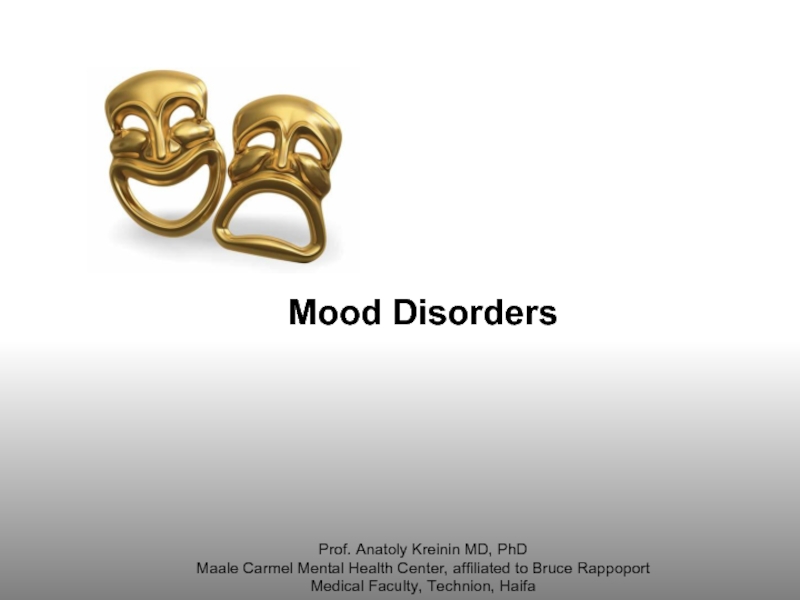
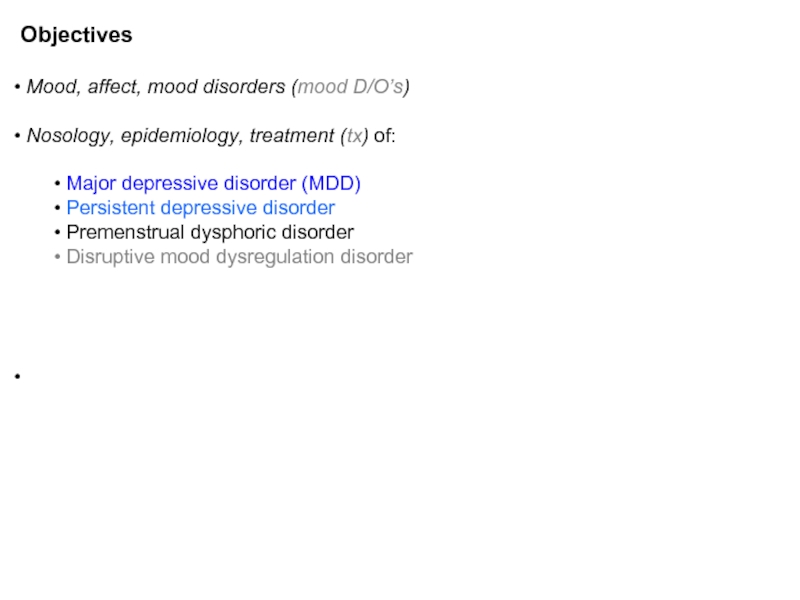
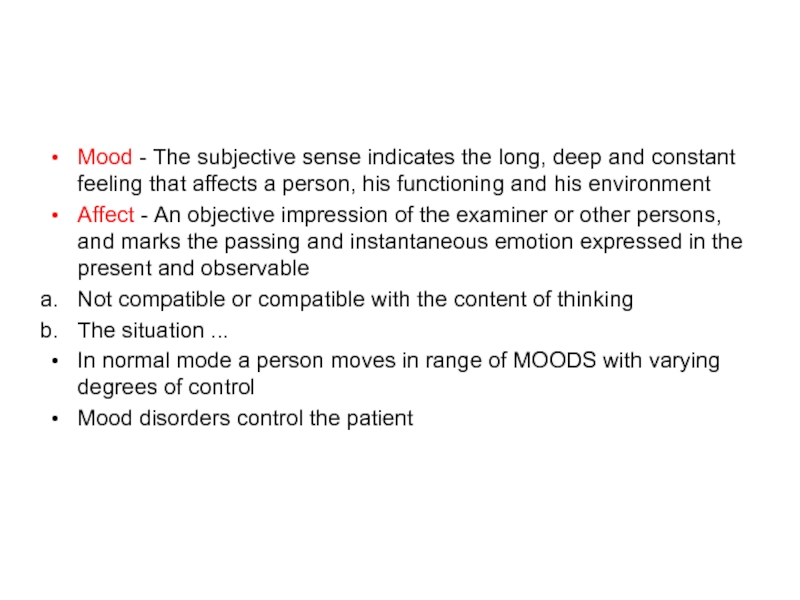
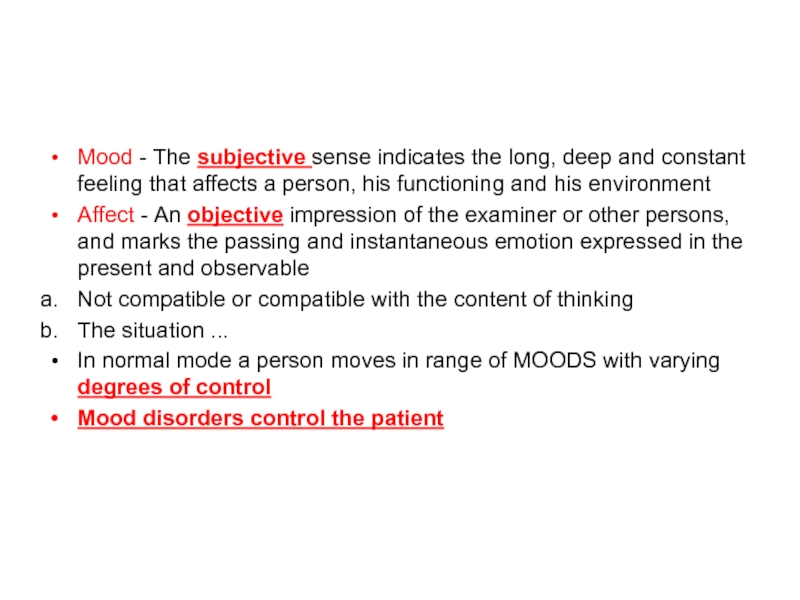
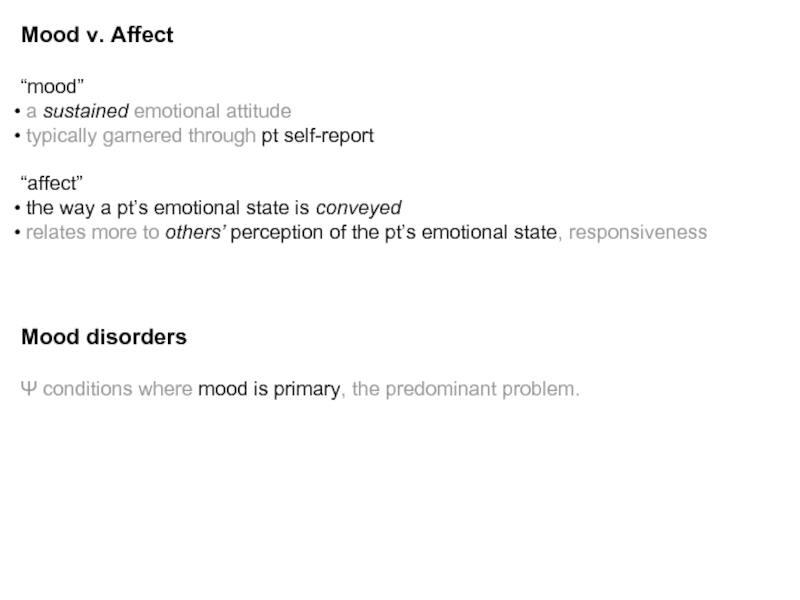
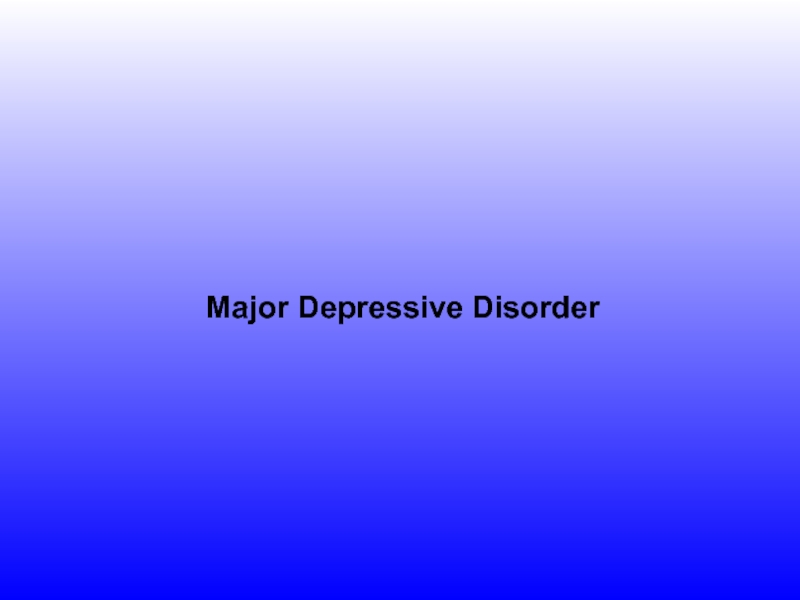
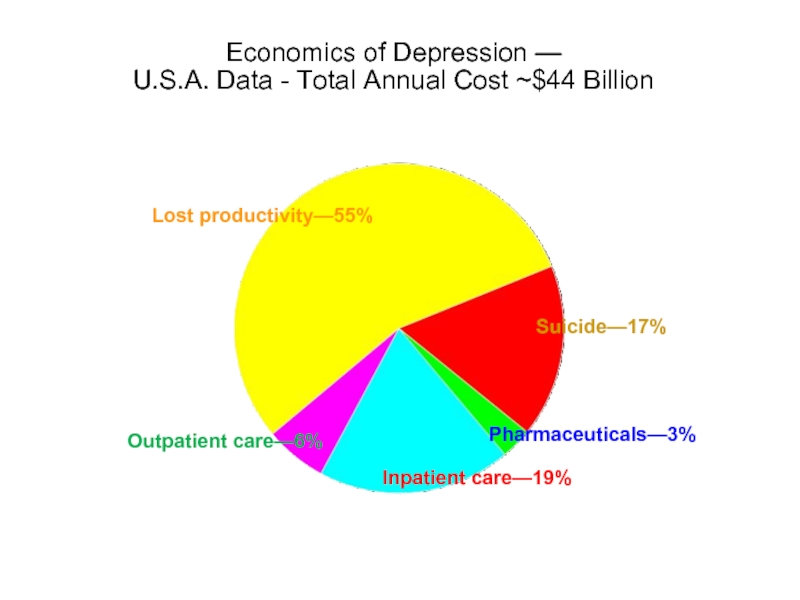
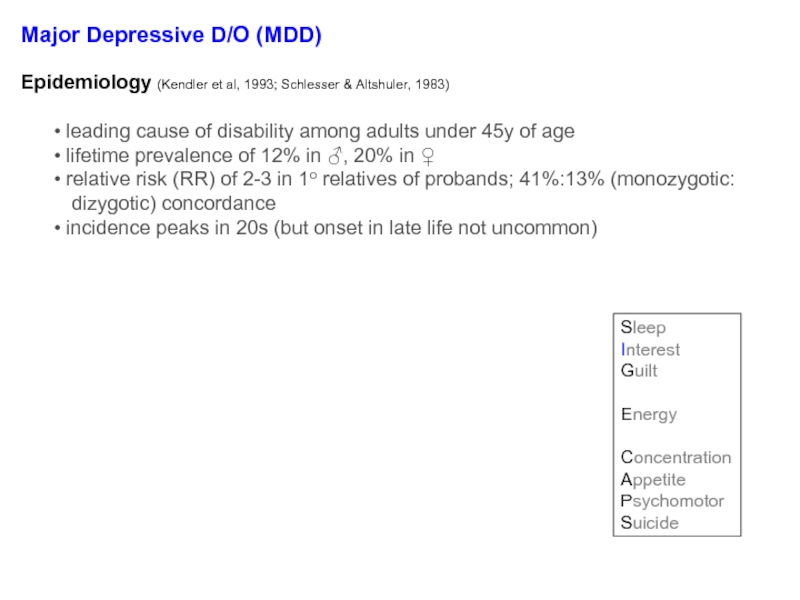

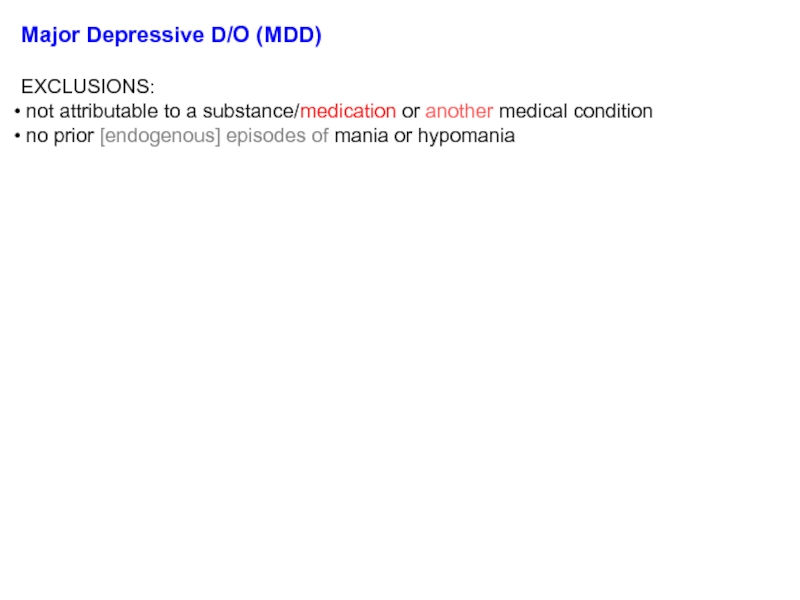
![Major depressive disorderw/ anxious distressw/ mixed featuresw/ atypical featuresw/ melancholic featuresw/ mood-[congruent, incongruent]psychotic featuresw/ catatoniaw/](/img/tmb/3/209912/381b3549ecee1db2a55cefd0fdabbaf8-800x.jpg)
![Major depressive disorderw/ anxious distressw/ mixed featuresw/ atypical featuresw/ melancholic featuresw/ mood-[congruent, incongruent]psychotic featuresw/ catatoniaw/](/img/tmb/3/209912/be917b2082f2f0fb61196ba74d523ca9-800x.jpg)
![Major depressive disorderw/ anxious distressw/ mixed featuresw/ atypical featuresw/ melancholic featuresw/ mood-[congruent, incongruent]psychotic featuresw/ catatoniaw/](/img/tmb/3/209912/fc5d88aba868e3fca9e6fed50bc62c78-800x.jpg)
![Major depressive disorderw/ anxious distressw/ mixed featuresw/ atypical featuresw/ melancholic featuresw/ mood-[congruent, incongruent]psychotic featuresw/ catatoniaw/](/img/tmb/3/209912/97646952e097adc3526eaaba33d65f20-800x.jpg)
![Major depressive disorderw/ anxious distressw/ mixed featuresw/ atypical featuresw/ melancholic featuresw/ mood-[congruent, incongruent]psychotic featuresw/ catatoniaw/](/img/tmb/3/209912/3aff5e0c99f73fa0c7f070dbbf42a265-800x.jpg)
![Major depressive disorderw/ anxious distressw/ mixed featuresw/ atypical featuresw/ melancholic featuresw/ mood-[congruent, incongruent]psychotic featuresw/ catatoniaw/](/img/tmb/3/209912/3952fa62512432fcdf61a3d78bcd5260-800x.jpg)
![Major depressive disorderw/ anxious distressw/ mixed featuresw/ atypical featuresw/ melancholic featuresw/ mood-[congruent, incongruent]psychotic featuresw/ catatoniaw/](/img/tmb/3/209912/ccd8f3a6e1e8cf5c56ef3b78f0783e5b-800x.jpg)
![Major depressive disorderw/ anxious distressw/ mixed featuresw/ atypical featuresw/ melancholic featuresw/ mood-[congruent, incongruent]psychotic featuresw/ catatoniaw/](/img/tmb/3/209912/5d1cebc2aeb408741a1a23c107d90155-800x.jpg)
